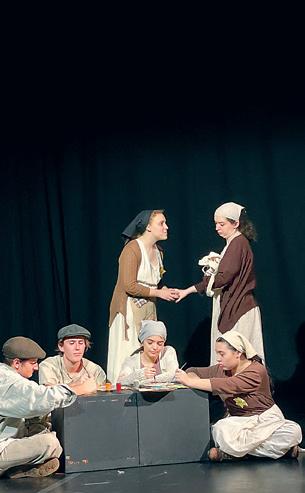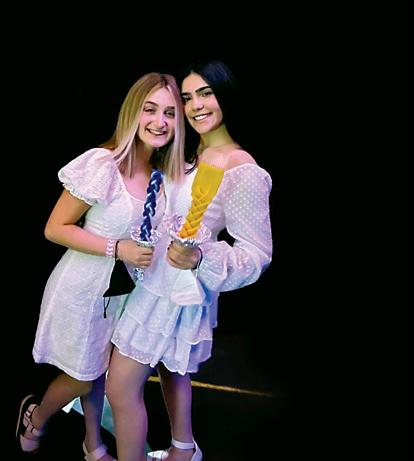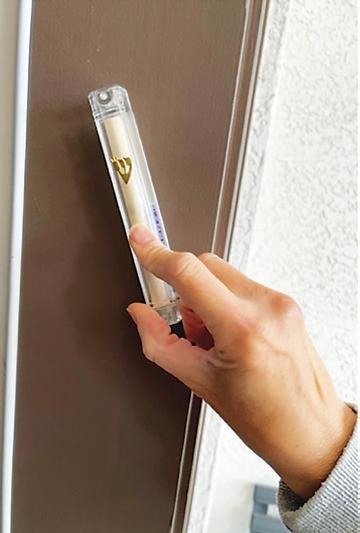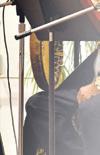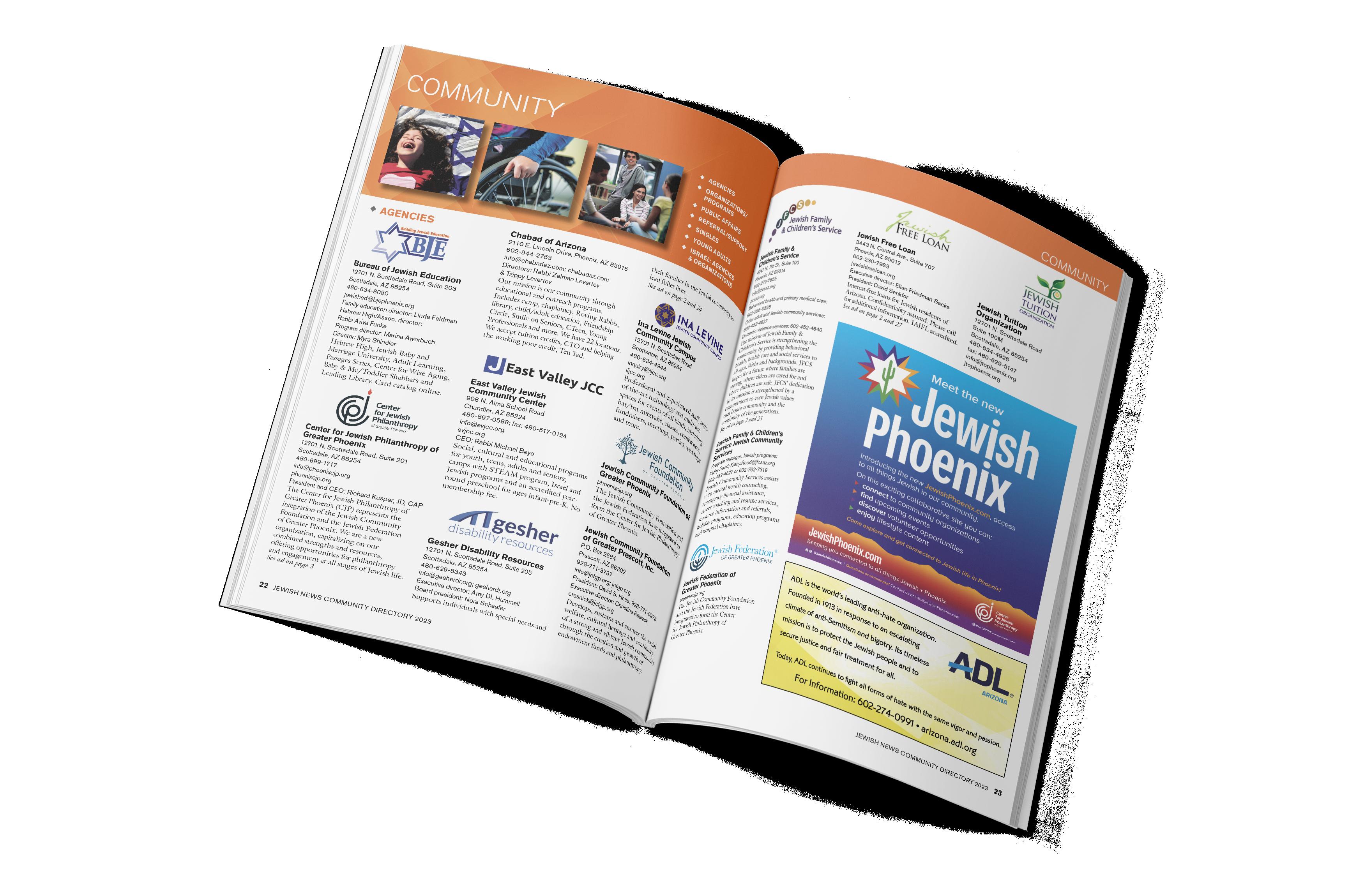KOSHER EXPERIENCE

Fry’s grocery stores are expanding its kosher section

SENIORS
Stephen and Jan Hertzfeld fill their lives with volunteering, traveling and hiking the Arizona Trail



Fry’s grocery stores are expanding its kosher section

Stephen and Jan Hertzfeld fill their lives with volunteering, traveling and hiking the Arizona Trail


The Center for Jewish Philanthropy of Greater Phoenix (CJP) has awarded grants totalling more than $1.5 million to 29 local and international organizations. The programs funded range from Shabbat dinners for needy families and inclusivity training for summer camps to security funding for Arizona’s small and medium-sized synagogues and the resettlement of Jewish refugees in Israel.
CJP considers it a priority to let the Greater Phoenix Jewish community know where its money goes, who benefits and why it’s good for the community, said Richard Kasper, CJP CEO.
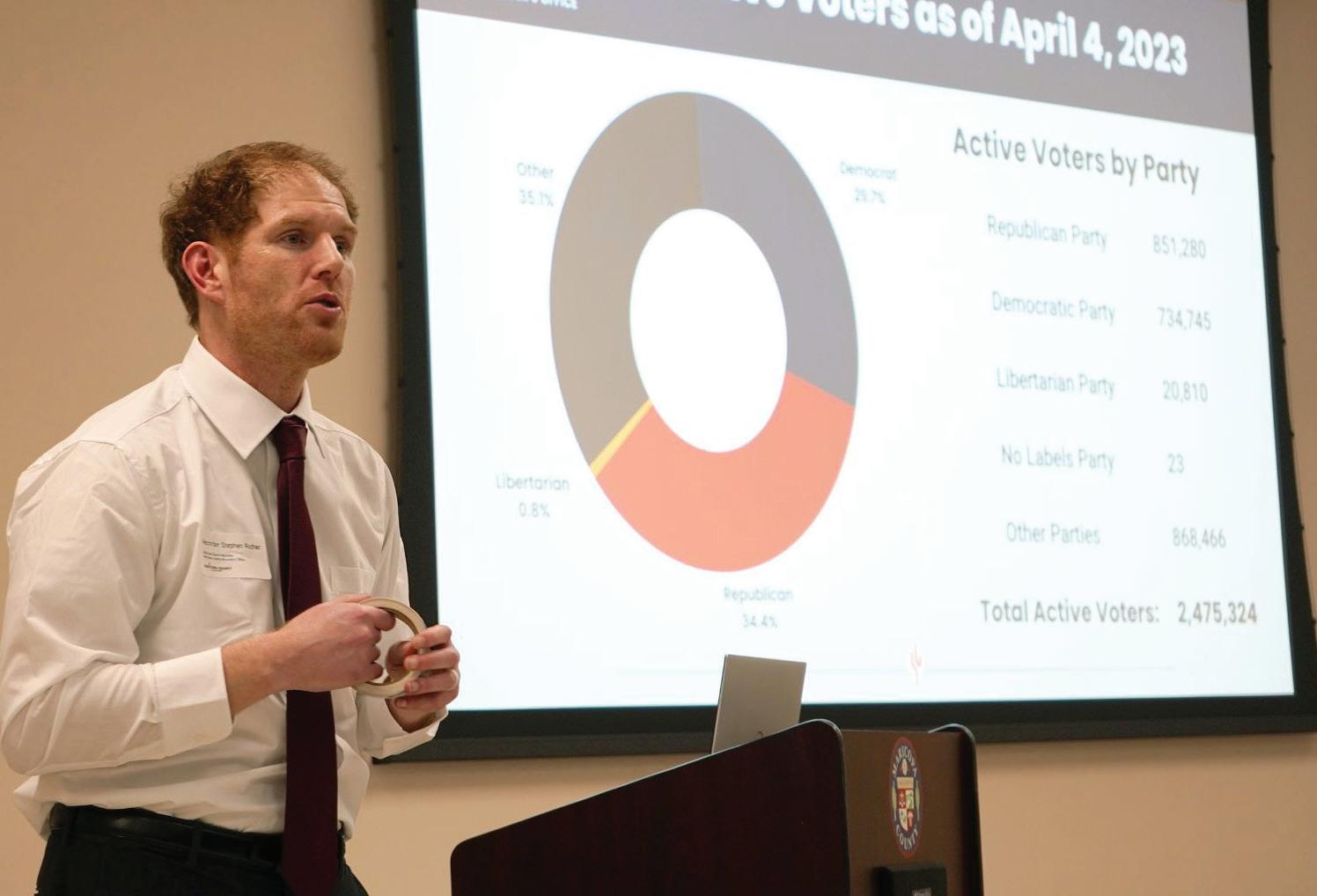
“I am really proud of the work that was done by the Community Impact Committee and by our board of directors, and you can see why when you look at the list of recipients. There is tremendous diversity in the organizations and programs and their constituents that we’re supporting. It feels like progress,” he said. By funding organizations CJP is “helping them to serve people,” he said, noting it goes beyond the Jewish community.
For example, Scottsdale Arts was awarded $7,500 to support its “Hold on to Hope Traveling Exhibition,” which takes viewers on a visual journey to Nazioccupied Poland via the personal photos and anecdotes of local Holocaust survivor Oskar Knoblauch. Although the organization is not Jewish, and many of those viewing the exhibit will likely not be Jewish, it is a valuable Holocaust education program for

Maricopa County Recorder Stephen Richer keeps his Twitter DMs (direct messages) open, which is a bit surprising considering he has been pummeled repeatedly by false allegations of malfeasance and sabotage in the 2022 election — claims that Arizona courts have dismissed. Yet, even in the face of violent threats, transparency “is the ethos that I want to embody for this office. You can ask me anything. If you have a direct question or want me to look into a particular voter situation, I’m happy to do it,” he told Jewish News the last week of June.
Richer’s office is responsible for processing and preserving documents, maintaining voter registration records and facilitating early voting in Maricopa County. Along with other election officials, he has been targeted for months by people who refuse to believe the election results, most notably Republican Kari Lake who lost to Gov. Katie Hobbs, a Democrat, by less than 20,000 votes. Lake continues to accuse Richer of, among other things, misprinting ballots with the wrong image, putting 300,000 “phony” early-voting ballots into the final count and causing polling place printers to jam on Election Day, even though her claims have been disproven in court. But that hasn’t curtailed Lake and her allies from repeating them. On Thursday, June 22, Richer, also a Republican, took the unusual step of filing a defamation lawsuit against Lake, her campaign and her political action committee.
SEE RICHER, PAGE 3

Proving defamation for public officials is a challenge, but Richer and his lawyers are confident they can meet it.
“The Arizona Court of Appeals and the Arizona Supreme Court have told her there is no basis for these theories; nonetheless, she proceeds to make statements that have caused me considerable harm and anyone who plumbs a little bit would come up with lots of documented evidence that she bears malice towards me,” Richer said.
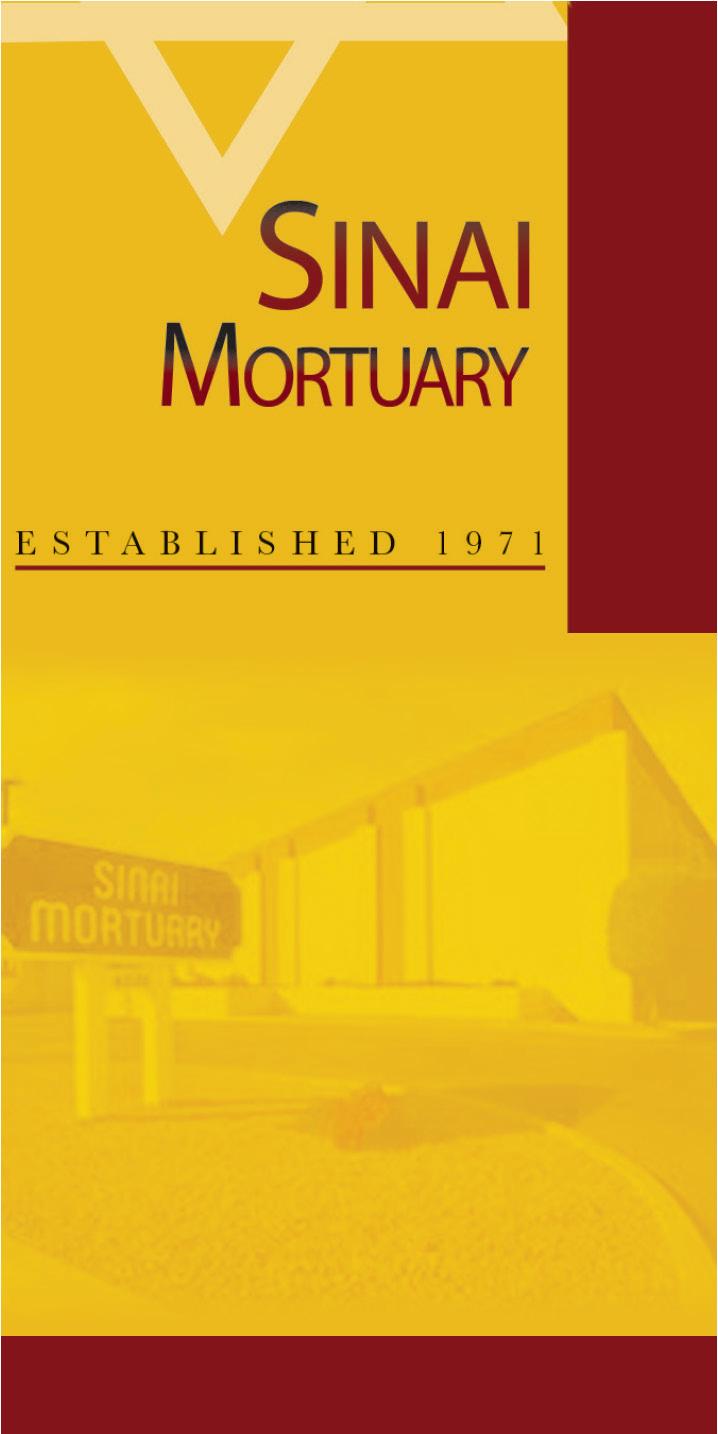
“There is a non-zero number of people
Jewish organizations within a few years, CJP is proving that it heard the message. CJP has set a goal for itself of increasing its annual campaign by 20%, which is a hefty but achievable lift, Kasper said, add-
who will forever think that I am a criminal who, according to some, should be drawn and quartered because of what Kari Lake has said. Even if I get the relief that I seek, for those people, the bell is rung and it will never be unrung,” he said.
This is the first lawsuit Richer has filed in his individual capacity as a plaintiff and he didn’t take the action only because of Lake’s accusations of criminal and immoral behavior or the misinformation and disinformation she and her allies have spread, he said.
In an op-ed published by the Arizona
ing that setting such a goal is not about raising money for its own sake but what the money can do for the community.
“The goal is always serving the Jewish community,” he said. JN
Arizona Kosher Food Pantry, Shabbat Dinners for Needy Jewish Families
Birthright Israel Foundation, Securing the Future Through Birthright Israel
Bureau of Jewish Education, Community-Wide Celebrations
Senior Rides, Center for
Republic on the same day he filed the suit, Richer wrote, “Her (Lake’s) words have provoked death threats from Lake’s followers. I’ve been forced to increase my personal and professional security while still watching over my shoulder.” He’s not the only one who’s had his life turned upside down. This suit is also about the ramifications Lake’s words have had on his wife, his colleagues and “the thousands of election workers who have left the field after being harassed or worse, simply because they chose to help Americans
SEE RICHER, PAGE 4
Jewish News is published by the Jewish Community Foundation of Greater Phoenix, a component of the Center for Jewish Philanthropy of Greater Phoenix.
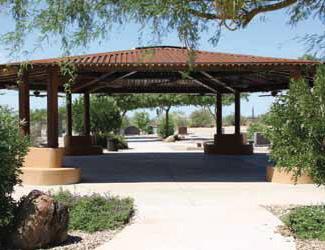

The breakdown of grants is as follows:
For more information, visit phoenixcjp.org/what-we-do/cjp-funding.
RICHER
CONTINUED FROM PAGE 3
vote,” he wrote.
Lake did not respond to Jewish News’ request for comment about the lawsuit. Whatever happens with the lawsuit, he is determined to challenge “the cacophony of voices” sowing doubt about the legitimacy of the 2020 and 2022 elections coming from within his own party, whose record “has been less than stellar,” he said. It’s time for people who know the truth to speak up.
“I’ve seen this demon grow and consume more because so many people have turned their backs to it,” he said.
Willmeng Construction, Inc. has F/T Project Engineer 3 position in Phoenix, AZ. Duties: Review/ anlyze constrctn plans & specs; Asst all aspects of constrctn prjcts from startup thru closeout; Asst w/ subcontrctrs & subcontrcts re scope review, internal requests, change orders, buyout & commnicatn; Create Drawing Logs to memorlize drawing sets; Mnge billing process in cordnatn with Prjct Mgr. Requires: BS in Constrctn Mgmt, Civil Eng, or rltd + 1 yr exp. Bkgrd check. Email resume to careers@willmeng.com, Incl Job Code WCLP-PE3
Richer, who is Jewish, also believes there is a clear Jewish legacy warning of the dangers of turning a blind eye.
Fellow Republicans have told him that, while they think election denialism is nonsense, it’s not something they want to deal with and might even give it a hint of credibility “by making an occasional nod to it,” he said.
He’s even asked himself whether he would have been so outspoken if elected to another position instead of being in the center of the maelstrom. Honestly, without his current “level of fluency and expertise,” the answer is maybe not.
Thinking through certain episodes in his personal history, he believes he would have said, “Enough’s enough. This is silly and disruptive, and it’s not healthy.”
In 2018, when he was an attorney in private practice, he was asked by Arizona Republicans to lead an audit on that year’s election, specifically focusing on potential statutory violations. He wrote two “very measured” reports at the time and still considers them “accurate and responsible.”
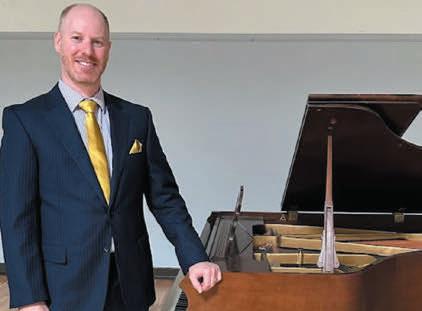
“The ‘F’ word (fraud) never appeared once and I hope that I didn’t make leaps where it would have been irresponsible,” he said.
Looking back, however, he said he was naive to think that some people asking for the audit weren’t simply looking for “fuel
for the fire they were already cooking.”
In 2020, Richer criticized Adrian Fontes, his then predecessor, for attempting to mail ballots to all registered voters rather than just those on the active early voting list, something he maintains would have been unlawful if it had been carried out.
“What I didn’t fully appreciate is the inability of many members of the public to distinguish that from thinking that’s rigging the election wholesale — that statutory deviance is the same as flipping votes or having machines hacked and having candidates have their vote count manipulated.”
He contended it’s the same as believing a shoplifter is identical to a person detonating a nuclear bomb in the middle of Phoenix.
“But I don’t know that everyone appreciated the difference, and perhaps I was naive in thinking that more people did,” he said.
Now, he considers Secretary of State Fontes a friend.
“I’ve reoriented myself in this office to be on the same side as people who broadly support our democratic institutions,” he said.
Richer also wants voters to see firsthand how those institutions work and this spring, he’s been encouraging county residents to take an elections facility tour.


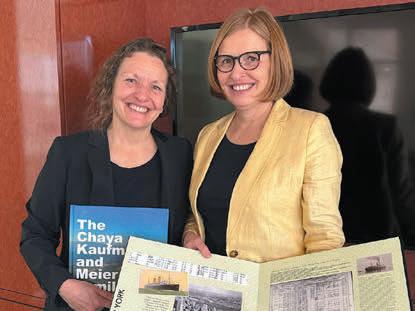
“I firmly believe we would be much better situated as a community if we got to give all 4.5 million residents of Maricopa County a two-hour elections tour,” he said.
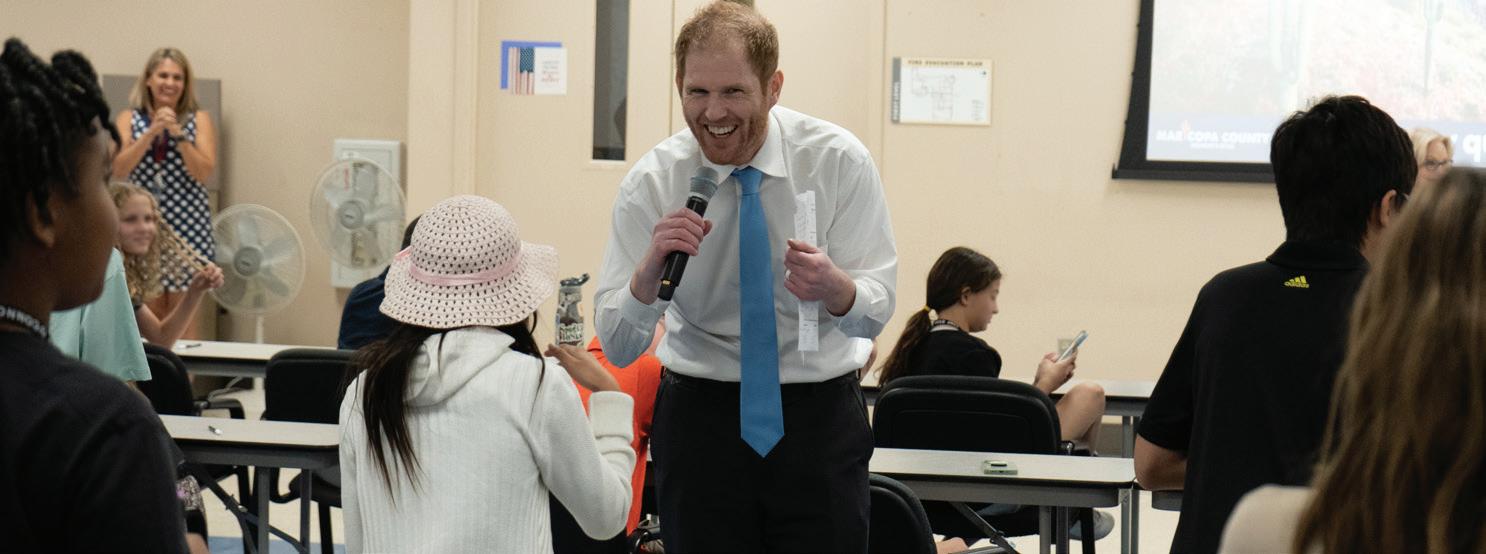
Though he admitted the average tour taker is not one of his detractors; lately, there have been more people coming who are skeptical, even hostile to the process. Those are the people he would most like to see walk through his open door.
“While not 100% successful, I do feel that we have a positive impact on almost everyone’s confidence level who enters our building,” he said.
Mahjong Wednesdays Starts Aug. 16

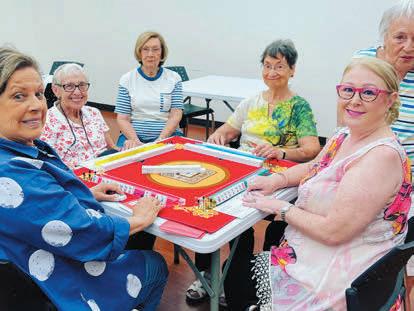
For the same reason he keeps his Twitter DMs open, it’s best to leave a lot of room for “positive interactions.”
The tours are not the only thing he’s doing to bolster voter confidence. His office just rolled out a title alert system to reduce fraud against property owners, enhanced valid-tracking services of early ballots and redesigned the election website to improve users’ access to information. He and his colleagues are also redesigning the voter registration database. Again, if anyone has a question about the work of
his office, all they have to do is ask.
“I just hope that with our efforts, and with a changing political climate, that there’s less and less patience for people who are still banging on about ‘Oh, when I ran that election and I didn’t get more votes than the other person, I definitely should have won because I was the awesomest,’” he said.
Soon after the 2022 election, the Jewish Community Relations Council of Greater Phoenix (JCRC) and five other faith and community organizations wrote a letter supporting the leadership of Richer, the Maricopa County Board of Supervisors and Maricopa County Sheriff Paul Penzone in protecting the democratic process. Though Richer is Jewish, JCRC — the only Jewish organization offering public support — did not mention his religious affiliation.
Richer is from Sandy, Utah, a suburb of Salt Lake City, and many people assume he’s a member of The Church of Jesus Christ of Latter-day Saints “because of the way I dress and because I’m from Utah and still have an (801) phone number,” he said. Some people angry about the election even told him to “get my Mormon ass back to Utah.”
Richer said he’s “‘synagogueically’ homeless” at present and considers himself “Reform-lite,” but in college and the years following, he often attended Orthodox shuls, has written d’var Torahs and respects Judaism’s focus on academic rigor and learning.
“It’s the history and people more than the spirituality,” he said.
A professed phone addict, Richer said he would love to turn his off on Shabbat “but I don’t do it.”
A quick glance at his Twitter profile, which he keeps lighthearted, displays a list of everything he loves, such as hiphop, fantasy books and cookies. His wife and family are listed last, but that doesn’t mean least.
Richer is quick to recount the famous exchange between Henry Kissinger and Golda Meir. When Kissinger told Meir he considers himself “an American first, Secretary of State second and a Jew third,” she responded, “In Israel, we read from right to left.”
“My Twitter profile also should be read right to left,” Richer quipped. On the other hand, he also called Diet Coke, the first item listed, “the nectar of life.” JN For more information, visit recorder.maricopa.gov.
Medieval Jewish Babylonia: Beyond Rabbanites and Karaites
Eliyahu Freedman Thursday, August 31, 2023
10:00 am PT
History of Jews in Uganda & Their Sukkot Experience
Rabbi Gershom Sizomu Thursday, October 5, 2023




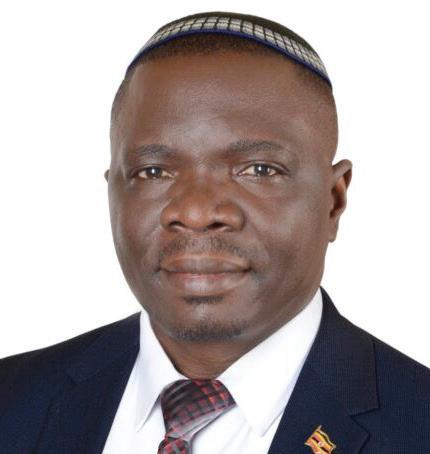
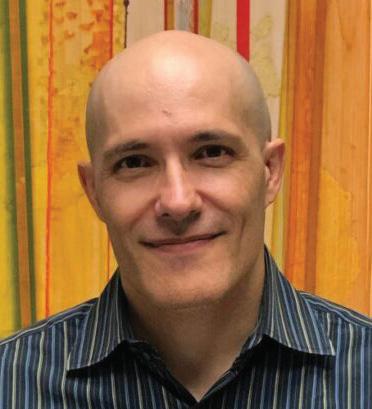

10:00 am PT
Women’s Sexual Assertiveness: An exploration of Talmudic perspectives
Rabbi Sarit Horwitz


November 2, 2023 @ 1:00 pm PT
Finding Light in Darkness
Melanie Gruenwald
Thursday, December 7, 2023 @ 1:00 pm MT
Debut Fiction and the Holocaust: When Fiction Steps in for History

Martha Anne Toll
September 7, 2023 @ 1:00 pm PT
The Gifts of Imperfection: Brene Brown through a Kabbalah Lens

Melanie Gruenwald Thursday, September 21, 2023 @ 1:00 pm PT
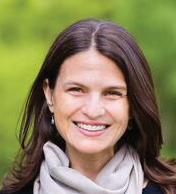

ZEICHICK FAMILY LECTURE: A Debate: Is Judaism Liberal or Conservative?




Rabbi David Saperstein & Dr. Tevi Troy

October 15, 2023 @ 7:00 pm PT
IN-PERSON & VIRTUAL
Jews on the Move: The geographic dimension of Jewish survival in North America
Michael Weil
November 9, 2023 @ 1:00 pm MT
Radical Jewish Views of God: Maimonides vs Spinoza
Rabbi Micah Streiffer

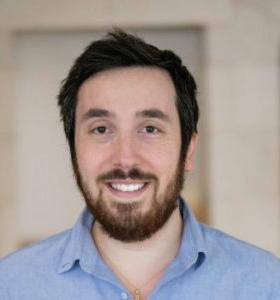


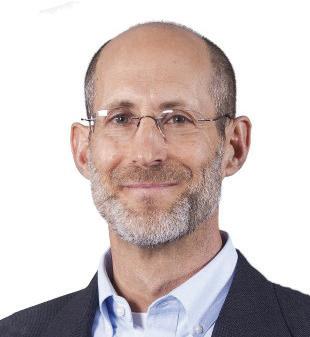
December 21, 2023 @ 1:00 pm MT
Mystical Hebrew Letters

Dr. David Sanders
Thursday, October 19, 2023 @ 1:00 pm PT
Antisemitism: Why is it still around and whose fault is it?
Avi Posen
November 20, 2023 @ 10:00 am MT
Introduction to Dreams and Kabbalah
Dr. David Sanders
Thursday, January 4, 2024 @ 1:00 pm MT
Rain, Nostalgia, and Empathy: Liturgical Poems for the Holiday of Sukkot
Dr. Yitz Landes
September 28, 2023 @ 1:00 pm PT
Mayko-mashmelon: A Survey of Yiddish Art Song
Anthony Russell

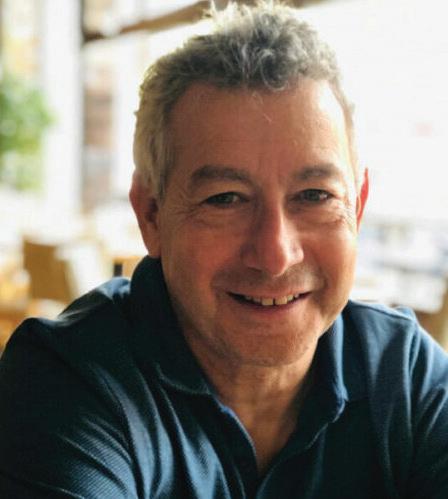
October 26, 2023 @ 1:00 pm PT
Who is in charge? Philosophy of halakhah through the eyes of Rabbi Joseph Soloveitchik and Rabbi Moshe Feinstein
Rabbi Zachary Truboff
November 30, 2023 @ 10:00 am MT
SHERMAN MINKOFF MEMORIAL LECTURE: Ancient Wisdom to Mend Our Broken Hearts and World Rabbi Sharon Brous

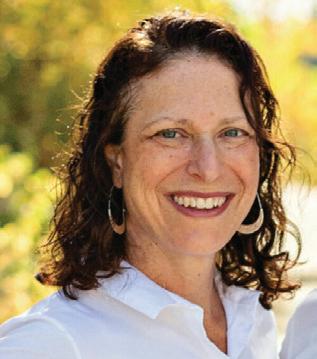


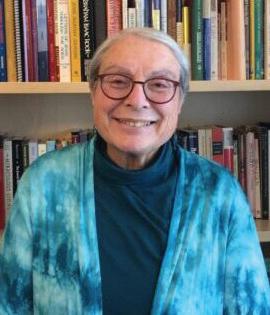
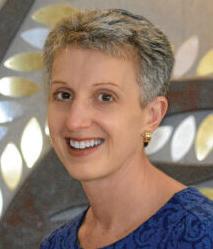
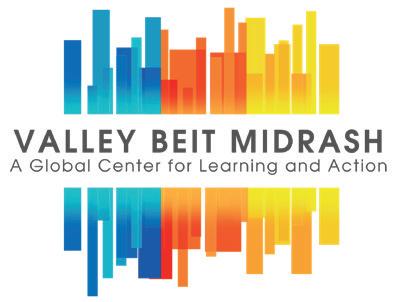
Thursday, February 22, 2024 @ 7:00 pm MT
IN-PERSON & VIRTUAL

In early January, Yariv Levin, Israel’s deputy prime minister and minister of justice, proposed a plan to overhaul the nation’s judicial system. The announcement was met with bitterness and anger from hundreds of thousands of Israelis, who took to the streets to protest what many perceived as an affront to Israeli democracy. There were also counter protests by Israelis who agreed the judiciary was long overdue for reform. While some pundits have warned of a number of terrible consequences, including economic turmoil and international blowback, others say these doom-filled prophecies are largely overblown — but still might harm Israel’s social cohesion.
Retired Israeli judge Philip Marcus, a proponent of reform, said that while there
is unrest, there will be no civil war. Some politicians might be attempting to leverage the political situation to their advantage, but that’s just par for the course and not a sign of revolution, he said.
“I am optimistic that better counsels prevail and that Israel will come out of this stronger and more resilient,” he said.
Marcus was in Phoenix in early June to address family court reform for the Superior Court of Arizona’s Family Division, Ohr HaTorah Congregation and the Phoenix Community Kollel. After serving on Israeli courts for nearly two decades — the Jerusalem Magistrate Court and Jerusalem Family Court, where he was also chief justice — Marcus retired and returned to academia in 2012. He is a government consultant and lectures in Israel and around the world. On Sunday, June 11, he spoke at the Kollel about the proposals for judicial reform in Israel.
Marcus gave a basic overview of the history of Israel’s judicial system, outlining what he sees as its strongest and weakest elements, and explaining why he believes
reform is necessary. Whatever its flaws, however, he still credits Israel’s system of justice with being “several orders of magnitude better than the system in the United States and many other countries, even as it stands.”
The proposed reform would curb the judiciary’s influence over the Knesset’s ability to make laws by limiting the Supreme Court’s power to exercise judicial review, giving the government control over judicial appointments (the Judicial Selection Committee currently controls the process) and restricting the authority of its legal advisors.
Marcus also focused on Aharon Barak, Israel’s former Attorney General and Supreme Court president, and his outsized role in both setting a precedent of judicial activism for the Court and making incendiary remarks about the reform. Barak has publicly called the reform “a war against democracy.”

Under Barak’s years of leadership, the Court expanded its competencies, allowing it to make more decisions for Israelis, thereby competing with the Knesset rather than complementing it, and empowered the “reasonableness” standard for administrative decisions (meaning that they are made with consideration of all relevant factors). Critics point out that the principle of reasonableness has been used to reverse important government decisions, including those concerning halachah, and leads to uncertainty because it’s too amorphous, making it difficult to predict how judges will interpret it.
Barak also interpreted Israel’s Basic Laws as a “constitutional revolution,” allowing the Court to strike down legislation it views as violating human rights. Marcus spoke only briefly on some of the problems he sees in codifying “rights” rather than “responsibilities” into law, a topic he sometimes lectures on in other venues.
Marcus also decried the lack of public debate about the proposed judicial reform, which might have brought the temperature down in the country and prevented some of the more bellicose pronouncements that he argued only served to create distrust.
“The real work should be done with an intelligent, informed debate, where everybody who is a stakeholder can debate these things together, rather than shouting and screaming at one another,” he said.
While he is a strong advocate for judicial reform, Marcus doesn’t want to see a decline in the public’s faith in its institutions, which are quite high, he said. One of the critiques of the reforms is that it will shift the balance in power towards the political leaders in the Knesset. He pointed out that the makeup of
that body can change and new leaders will be able to pass laws without worrying that the Court will strike them down without any accountability.
Still, he recognized the fallibility of politicians.
“The Knesset is formed of politicians, and some are better than others. Some are more interested in their own seats or the seats of their parties than the welfare of the State of Israel,” he said.
The country has also grown considerably since the number of seats in the Knesset (120) was first determined. Marcus would like to see the body expanded to represent the population better as it stands now. Sadly, nobody asked him before deciding how to reform the system, he joked.
Rabbi Effie Loffman, the Kollel’s director and co-sponsor of Marcus’ talk, suspected such a controversial topic would be appreciated by people in the community, especially given Marcus’ unique perspective as someone who’s worked so many years in the Israeli judiciary.
“People were really engaged and everyone left much more educated on the subject,” Loffman told Jewish News.
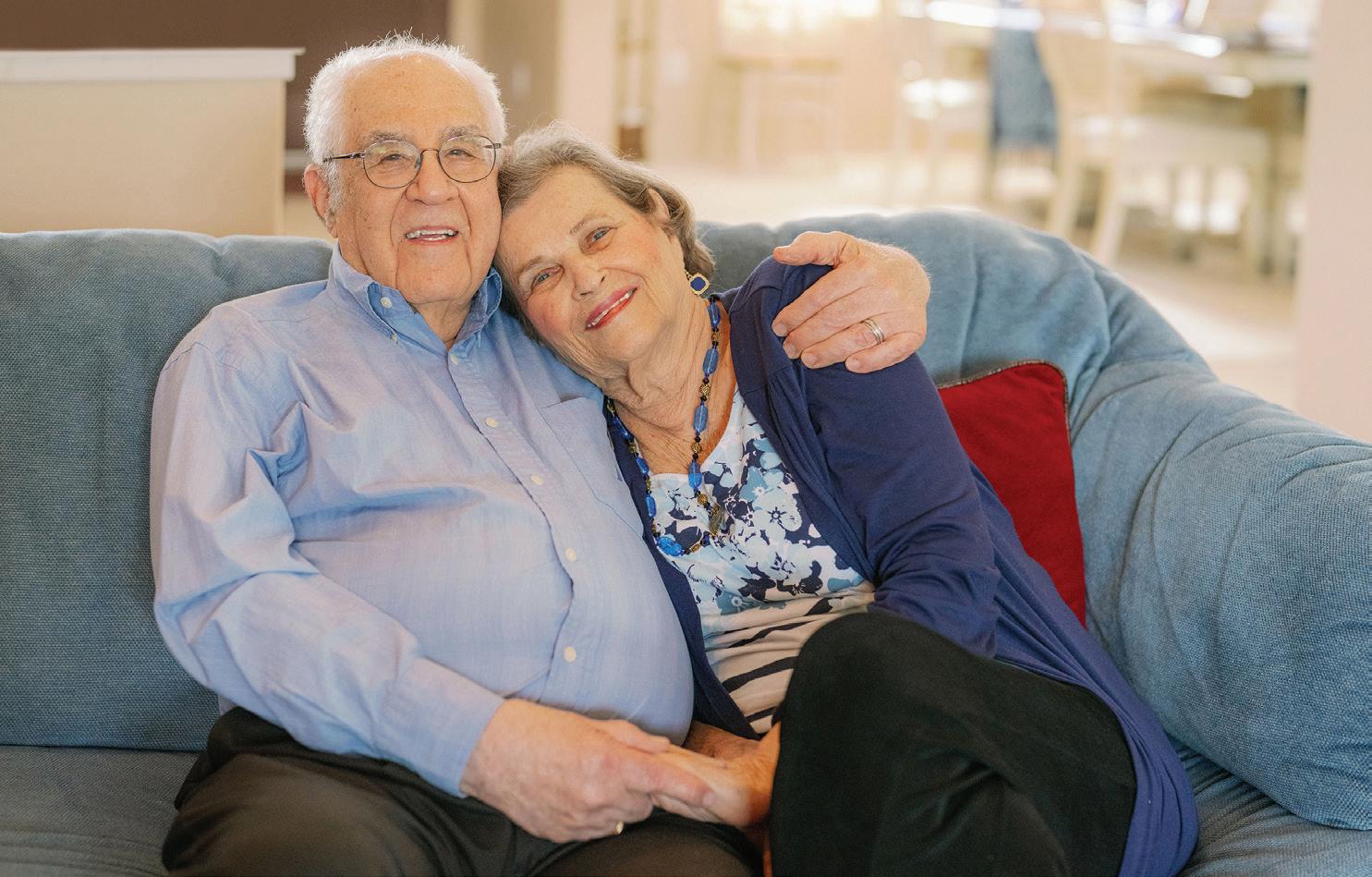
Sunday’s lecture was especially useful to lawyers, who can receive an hour and a half credit towards continuing legal education for attending the event. But not everyone who came was a lawyer.
Debbie Friedman, who came after hearing about the event because she is interested in the debate, said Marcus gave her a sense of optimism.
“I like how he framed it as something to be debated rather than as a revolution. It would be sad for Israelis to see this as something that could ruin their society because Israel is very important to Jews all over the world and the world as a whole,” she told Jewish News.
Marcus’ final proof that there is no Israeli civil war on the horizon came from an anecdote about the protests themselves. A group of people protesting against the reform with Israeli flags over their shoulders passed another group on their way to protest in support of the reform, also with Israeli flags. One supporter who lacked a flag turned to someone from the first group and asked to borrow his — the flag was given without a second thought. The story illustrates the unity Israelis feel, Marcus said.
“You’ve got left-wingers and rightwingers and all kinds of religious and secular people. They’re all involved as soldiers and first responders. They’re all doing it together because we’re all in this together. This is not a civil war,” he concluded. JN
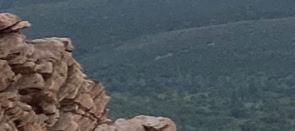
Last month, the Republican Jewish Coalition (RJC) announced that Scottsdale couple Orit and Adam Kwasman would lead its Arizona chapter. The RJC has had a presence in the state for the last two decades but is now increasing its role ahead of the 2024 election season, given that Arizona “is one of the last true remaining ‘purple’ battleground states,” according to the press release accompanying the announcement.
The RJC’s mission is to be a bridge of understanding between the Republican party and the Jewish community and to build “a strong, effective, and respected Jewish Republican voice in Washington and across the country,” according to its website.






The Kwasmans have been actively involved in politics for a combined total of 30 years. Adam is a lawyer and in 2012, he was elected to the Arizona House of Representatives, where he served as vicechairman of the House Ways and Means Committee. In 2022, he created Jewish Voices For Kari Lake to ramp up Jewish support for the Republican gubernatorial candidate. Orit is a political writer and commentator, who has provided election and political analysis for CNN’s “Newsroom,” as well as other outlets, and the former development director at the Faith & Freedom Coalition, an organization that educates and mobilizes people of faith for civic action.
Adam and Orit have three children and live in Scottsdale, where they are members and volunteers of Congregation Beth Tefillah and the Chabad of Phoenix.

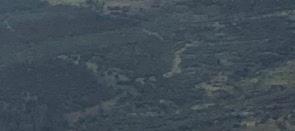


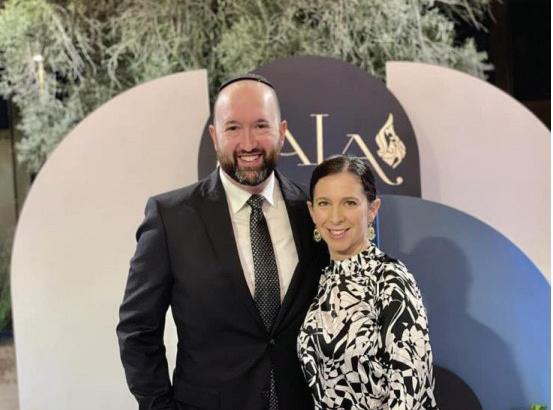
The couple told Jewish News via email that their first priority in leading the state’s RJC chapter “is making sure Arizona is a great place for us to raise our family — that means doing our part to
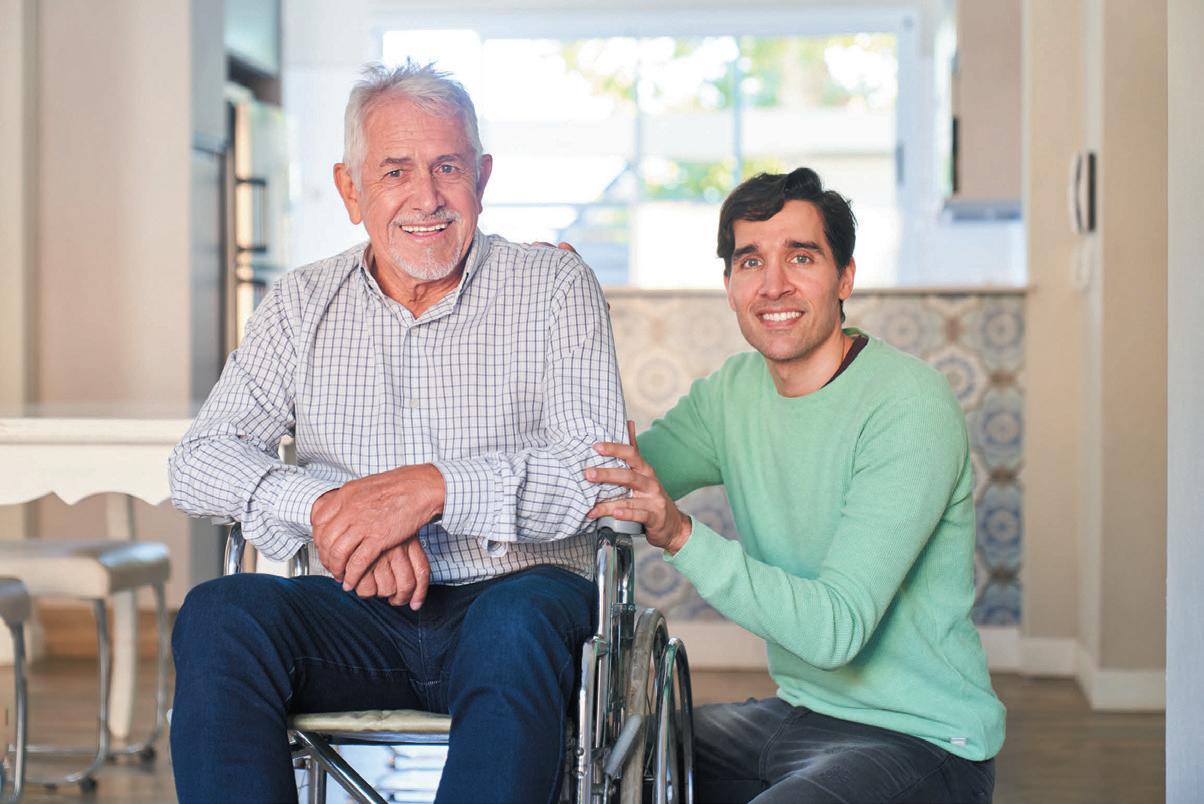




make sure Arizona has leaders who are empowering communities to have great schools and fixing the regulatory and tax structure to allow businesses to thrive.”
They will focus on fundraising and building a “Get Out The Vote” (GOTV) network in the Jewish community.
“Adam’s background as a candidate and elected official combined with my background as a fundraiser and campaign volunteer give us unique insight into how this works best,” said Orit.
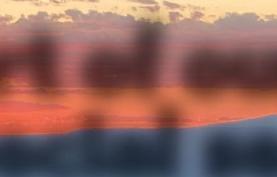
RJC CEO Matt Brooks hopes that the Kwasmans will be able to duplicate the organization’s advocacy efforts in Florida, Georgia, Ohio and Pennsylvania.
“We are very excited that Orit and Adam have agreed to take on this new leadership role in Arizona. Arizona is a key state for Republicans and the Jewish community today and we look forward to chalking up successes there in the years ahead,” Brooks said.
“The RJC will stand up for the issues that Arizonans care about, and that’s providing a safe, prosperous environment to live, work and raise a family,” said Orit.
The Kwasmans actually first met at the RJC’s annual meeting in Las Vegas several years ago. In their wedding highlight video, Adam recounts how he set aside 15 minutes for Orit when she later came to Tucson on a fundraising trip. He was then running for office and had only limited time to talk.
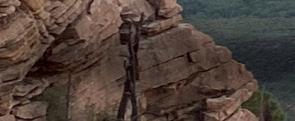

“I gave her 15 minutes for a networking coffee. Fifteen minutes turned into two hours and both of us were like, ‘Oh! Well, that’s who I’m supposed to marry!’” he said. “Anybody who is a Republican Jew under the age of 80 — first of all, that’s amazing to begin with — but then around my age and single and beautiful and brilliant … there’s not a lot of us.”
“L-O-V-E” by Nat King Cole plays in the background of the video and Adam speaks over images of the couple talking, laughing, holding hands and sharing tender moments on their wedding day.
“There was no doubt immediately that that’s who I’m supposed to spend the rest of my life with. It was so easy. It was great. God is hilarious,” he said. They celebrated their eighth anniversary at the





end of June.


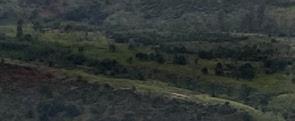

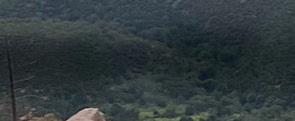



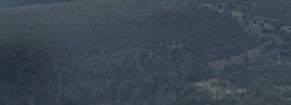




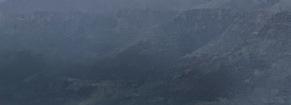








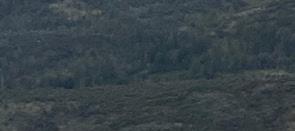

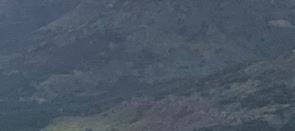
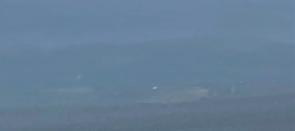




The couple are enthusiastic about their new leadership role at the RJC heading into the 2024 election cycle and said, “There’s a renewed sense of urgency to change the leadership of the state to better reflect its values and priorities and promote a strong future.” JN

For more information, visit rjchq.org.
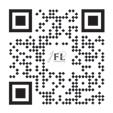



“THE RJC WILL STAND UP FOR THE ISSUES THAT ARIZONANS CARE ABOUT, AND THAT’S PROVIDING A SAFE, PROSPEROUS ENVIRONMENT TO LIVE, WORK AND RAISE A FAMILY.”
ORIT KWASMAN
Jewish Federations of North America recently announced that Danielle Gross, a member of Greater Phoenix’s Jewish community, will be the new co-chair for the National Young Leadership Cabinet (NYLC). Starting next month, Gross and her co-chair, Brett Tanzman of New Jersey, will work towards developing the capacity of young Jewish leadership nationally and across the world.
NYLC is the Jewish Federation’s young leadership development program meant to inspire the next generation of global Jewish leaders towards philanthropy, communal engagement and activism. Since it was founded in 1963, NYLC has worked to create and connect Jewish leaders and philanthropists, and has more than 450 current members and 4,200 alumni. Last year, its members raised over $3.725 million for their local Federation annual campaigns, the largest NYLC campaign in Jewish Federation history.
Gross has been part of NYLC for the last
six years and this year, as its leader, will be her last. She was first introduced to the program by Rachel Hoffer, the Center for Jewish Philanthropy of Greater Phoenix’s board chair, who let her know it was a place for like-minded people where she could see all the Federation’s work firsthand.
“I was drawn to the opportunity within Cabinet to be with like-minded young leaders who are in similar positions in their communities and to discover new ideas that I could bring back to Phoenix,” Gross told Jewish News.
Gross is very active in the local Jewish community. Currently, she is the Arizona political chair of AIPAC and secretary of the board for the Center for Jewish Philanthropy of Greater Phoenix; she has served on the Phoenix AIPAC Council and the board of the Minkoff Center for Jewish Genetics and is also a member of Temple Solel in Paradise Valley.
Gross, the granddaughter of Holocaust survivors, grew up in Lincoln, Nebraska
and attributes a part of her passion for Jewish leadership to both of those biographical details.
“My grandmother would always tell me how hard life can be and that helped me to see the big picture and know that even when I feel overwhelmed, I can handle it,” she said. She was taught to feel a responsibility to repair the world, “even if it’s only one step at a time.”
Being raised in a small city with an even smaller Jewish community, Gross learned to embrace her identity and put herself forward. Every summer, she went to Jewish camps where she was able to immerse herself in a Jewish world fully, which helped remind her who she was in a city with so few Jews.
When she graduated high school, her family moved to Scottsdale and she went to University of Arizona in Tucson, where she studied psychology. She also has a master’s degree in counseling and practiced as a mental health therapist for a time. Now she enjoys being thoroughly ensconced in the world of Jewish philanthropy. Still, her background in therapy assists her work because she’s comfortable being vulnerable, good at expressing herself and enjoys deep conversations.
“Quality relationships are the foundation of being an effective lay leader. Mutual respect in the relationship between lay leaders and professionals allows clear communication and propels the meaningful work that we can accomplish together,” she said.
Ben Schindler, NYLC’s senior director, praised Gross for her “impressive leadership” in Greater Phoenix, and is confident that she will “galvanize the next generation of Jewish leadership to build flourishing Jewish communities and lead with purpose.”
NYLC trains promising volunteers ages 30-40 for leadership positions in the Jewish

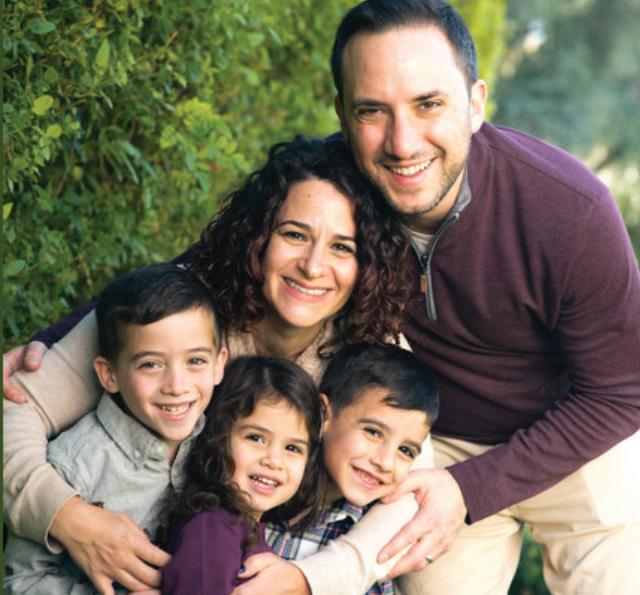
community. Its focus is to provide tools for participants to better themselves and their capacity as leaders through continued learning, reflection and action. Members participate in a five-year curriculum that builds on a series of Jewish values: hineni (call to leadership), achrayut (responsibility), kehilah kedosha (sacred community), Klal Yisrael (Jewish peoplehood) and hazon (vision).
Gross said to be a Jewish leader in a world with so many challenges and competing opportunities, one has to be “smart, open-minded, flexible and innovative.”
She also stressed how grateful she is to the leaders who came before her and those who have supported her and helped her strike a balance between work and family. Gross is married with three children: twin sevenyear-old sons and a four-year-old daughter.
“It’s important to acknowledge that I couldn’t do this work without a supportive and encouraging family. The time I have to spend away from my kids is spent creating a positive impact on the Jewish community, which will benefit them in the long run,” she said.
She has a lot on her plate, but she’s excited about starting work as a co-chair of an organization that has already helped her find her legs as a young Jewish leader in Greater Phoenix.
“I’ve learned that leadership is not about where I’m going but about the people with me. I hope to inspire my peers and empower them to pursue their leadership dreams, and Cabinet is an excellent platform to achieve this.” JN
To learn more about the National Young Leadership Cabinet, visit jewishfederations.org/how-we-help/ young-leadership/young-leadership-cabinet.
Jewish News is published by the Jewish Community Foundation of Greater Phoenix, a component of the Center for Jewish Philanthropy of Greater Phoenix.
Daniella Lerma, Fry’s multicultural specialist, travels to California four or five times a year. She enjoys going to the Ralphs grocery store in La Jolla, housing one of the largest kosher sections in Kroger’s (Fry’s and Ralph’s parent company) lineup, she said.
“When you walk in, there’s a kosher bakery, kosher deli and kosher ‘grab-andgo’ meals. Half of the store is dedicated to kosher products,” she said. “That was my inspiration. I thought, ‘How do we bring that back to Arizona?’”
Fry’s Food Stores’ answer was to launch “Kosher Experience” sections in three stores in Phoenix and Scottsdale. The largest Kosher Experience is inside Fry’s Marketplace at 4707 E. Shea Blvd. in Phoenix. The area contains several split aisles in addition to cases with frozen foods marked with the word “kosher” in blue lettering. Lerma is hoping to expand these sections to stores in Chandler and Tucson in the near future.
“I grew up in a Hispanic household, so learning the kosher side of the business has been very fun and I love it,” said Lerma.
She said there is one associate at the Shea Blvd. store, Tom Keppler, who is very dedicated and works with the distributor to keep the shelves in the kosher section stocked and orderly, in addition to connecting with the customers.
“Without his passion, we would not have been able to keep this rolling,” said Lerma. “He had a list of people who placed orders with him for Passover and Tom made sure he was here when they came to pick up their order.”
She said that the week leading up to Passover, people kept mentioning that they traveled from all over the state to this one store. “It’s amazing,” said Lerma. “I tried to get feedback to see what we can do in their areas next year, so they don’t have to travel to Scottsdale to get products.”
Lerma is planning meetings with rabbis across the Greater Phoenix area to help determine the best items to bring in for the community and what is lacking. She also reached out to Robyn Schwager, community impact manager at Jewish Philanthropies of Southern Arizona in Tucson.
“I personally am all for more kosher food and more variety (in Tucson). I think a lot of people are, too,” said Schwager. But she also noted that kosher food is more expensive and the cost can be prohibitive to some people.
Some local rabbis have visited the Fry’s on Shea Blvd. and pointed out to Lerma all the products located throughout the store with symbols on the packaging iden-
tifying the item as kosher. They explained that not every kosher product comes from a strictly kosher manufacturer.
On the other hand, Schwager, who keeps kosher and is now vegan, appreciates when a store carries items that are only produced by kosher manufacturers.

“When I did eat meat, a store would get in the packets of sliced deli meat and I would buy 10 or 12 packages at a time, to get me through,” she said.
Schwager also suggested that Fry’s take some of their kosher-food dollars and buy more diverse products. “You don’t need 10 varieties of jarred gefilte fish from five different manufacturers,” she said.
“Instead, take some of that money and buy kosher ketchup, that way you won’t have to mark down all that gefilte fish at the end of the season.”
Lerma keeps a list of items that customers ask for every day — yogurt, whipped cream and milk is the “big one,” she said — and she is working on adding more space for these items.
Schwager said that social media is a great tool for announcing new kosher products in stock.
“My family loves frozen gefilte fish. I saw a store posted they had some and I went and bought what I needed,” she said. When she got home, she posted her purchase to her Facebook group. By the next day, people went back and everything was gone.
“Word travels very quickly down here — everybody’s on social media when it comes to kosher,” siad Schwager.
To build product variety, Lerma is forming relationships with many kosher food vendors like Tuscanini and Heaven & Earth. One of the representatives she works with is Matt Kobzeff, vice president of western sales at Kedem Food Products/Royal Wine Corporation. Kedem is one of the brands distributed by Kayco, the leading kosher food distributor in the United States.
Kobzeff introduced Lerma to the Herzog family, who owns and operates Royal Wine Corp., which started the journey of getting kosher wine into the store.
“They were very welcoming and positive about our whole experience,” said Lerma. “They had us try a couple of their wines they make and told us the story behind some of the art they put on the bottle.”
These wines are displayed on an endcap (a retail term for the display area at the end of an aisle) marked “Kosher Wine & Spirits” and she is working on getting kosher wine into other Fry’s locations.

Lerma is also partnering with other stores to donate some of their kosher products to Arizona Kosher Pantry, the only kosher food pantry in the Southwest.
“We have five stores that have larger kosher sections, so we want to set something up with them to start donating,” she said. “The store managers are on board; we just have to work on how we will separate the product.”
On July 20, Lerma will accompany a group of Fry’s associates to volunteer at the pantry.
“We will start with a group of 10 and go down there and volunteer. I’m excited,” she said.
After the store is remodeled, she will be able to add a new assortment of products to the section.
“We are working with the store and having standards where they respect the section and only put our ‘true’ kosher product there,” she said. “They (our customers) trust it.” JN
For more information, visit frysfood.com.
Congregation Or Tzion welcomes new executive director
After a career spent leading nonprofit organizations, Gail Gilmartin became Congregation Or Tzion’s executive director in June, and she “cannot be more excited” about her new role at the Scottsdale synagogue.
Gilmartin grew up in Los Angeles, but made many lasting friendships with Arizonans through her involvement in United Synagogue Youth (USY), a Conservative Jewish youth movement, and even chose Arizona State University for college. After graduating, she returned to Los Angeles, but when the 1994 Northridge, California, earthquake destroyed her home, she and her family moved permanently to Arizona.
While living in Gilbert for 20 years, Gilmartin served in leadership roles at the Fiesta Bowl, Muscular Dystrophy Association, Special Olympics Arizona, National Kidney Foundation of Arizona and the Leukemia & Lymphoma Society. She was working at Courtney’s Place Arizona, a nonprofit organization for adults with disabilities, when COVID-19 hit. However, working remotely did not suit her.
“One morning, I just woke up and said, ‘I’m done,’” she told Jewish News.
Not long after, she received a call from Congregation Beth Israel (CBI) in Scottsdale asking if she would consider helping out at the front desk.
“It was fun, but I ended up taking on the jobs of people who kept retiring,” she said. Ultimately, that little desk job turned into two years as CBI’s director of clergy, administrative and member services.
“Gail brings a wealth of experience working with nonprofits and Jewish organizations. She will add immensely to our talented staff and clergy,” said Frank Jacobson, Or Tzion’s past president.

Last year, Gilmartin and her family moved to Scottsdale, both for her job and “it’s where all my friends are,” she said.
At a casual brunch, she learned about the Or Tzion position and applied.
“I knew that I could use everything I learned in my nonprofit positions in this job — it’s all led to this,” she said.
She plans to bring her experience working in event coordination, volunteer recruitment and engagement experience
to the executive director role and believes that’s what’s been missing in an otherwise highly organized and impressive staff, she said.
“After an exhaustive search over the past year, we know that Gail will fit in beautifully with our community. She brings so much to our thriving synagogue and we’ve already seen her hit the ground running,” said Rick Golub, chair of Or Tzion’s search committee.
Her first day, on June 12, involved “quite a bit of jumping in,” she said. Fundraising and High Holiday committees have filled her calendar and she’s spending time getting to know the congregation (happily, she found she already has friends at Or Tzion and a lot of builtin support) and meeting other Arizona synagogue executive directors who might help her learn the ropes.
She still attends some Chabad of Gilbert events and is preparing to be a leader on next fall’s Project Inspire Momentum trip to Israel.
“Right now, I’m just learning everything I can about the synagogue and its members,” she said.
JCRC leader to be honored as ‘Local Hero’ by ONE Community in October
Paul Rockower, Jewish Community Relations Council executive director, will be honored as a local hero by ONE Community, a coalition of businesses, organizations and individuals working to advance diversity, equity, equality and inclusion for all Arizonans, at its 13th “Spotlight on Success Local Heroes Awards.” The event will take place Friday, Oct. 13, at the Sheraton Grand Phoenix.
ONE Community bestows the honor of local heroes on those who demonstrate a dedication to ensuring that Arizona is a place that celebrates, respects and protects all of its citizens. The other honorees will be Sarah Krahenbuhl, Phoenix Suns Charities’ executive director; Terri Kimble, Chandler Chamber of Commerce’s president; Jennie Patel, NCAA Mens’ Final Four local organizing committee’s vice president of social responsibility; and volunteers, Gabe Hagen and Jesse Shank, co-owners of Brick Road Coffee in Tempe.
Rockower is honored to be recognized
for the JCRC’s work in helping protect the LGBTQ+ community against hate and extremism.
“As Jews, our experiences have given us the experience to fight against hate — we truly believe in “Never Again” for ourselves and others. Our mission is to help all people in vulnerable communities feel secure in their daily life and feel safe in expressing pride in their identity,” he said.
U.S. Sen. Kyrsten Sinema (I-AZ) will be awarded ONE Community’s first Common Good Award for her work introducing and passing the landmark Respect for Marriage Act in 2022 that repeals the Defense of Marriage Act (DOMA) and requires the U.S. federal government and U.S. states and territories to recognize the validity of same-sex and interracial civil marriages in the United States.
Lynette Braddock, an Arizonan mom who spoke and testified at the Arizona State Legislature and the Chandler City Council last year on behalf of her transgender daughter and others in the community seeking fair and equitable laws, will be given the Unity Agent Honor.
“It is with deep appreciation and gratitude that we come together to honor these brave leaders from across our community who strive to find common ground by working to ensure Arizona is a place that sincerely respects and protects all people on the same terms,” said Angela Hughey, president and co-founder of ONE Community and ONE Community Foundation.
Adam Goodman, a prominent Jewish philanthropist and business leader in Greater Phoenix, became Phoenix Symphony’s board chair in May at the organization’s annual meeting.
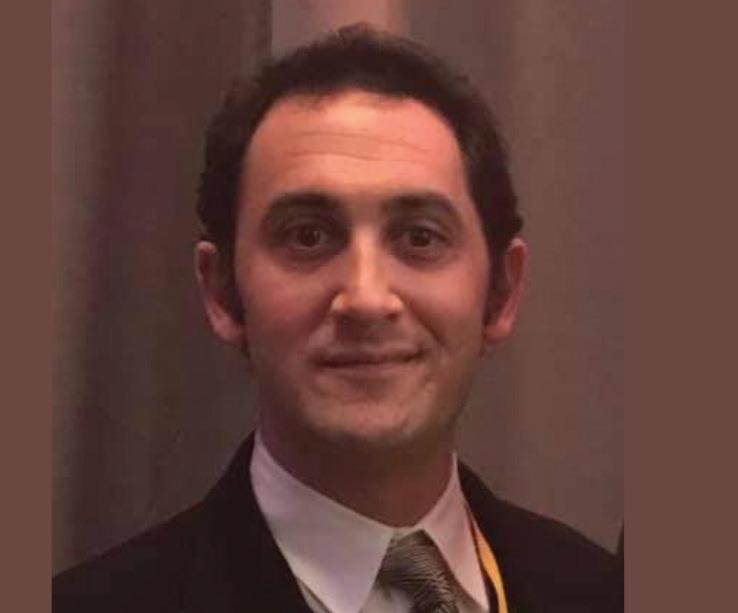
“The Symphony is incredibly fortunate to have a strong, dedicated group of community leaders on our board of directors. Our future is bright with Adam Goodman serving as chair. He is personally committed to the arts and a powerful advocate for the Phoenix Symphony as one of Arizona’s most important cultural assets,” said Peter Kjome, Phoenix Symphony president and CEO.
Goodman has served in the leadership of the Jewish Community Relations Council of Greater Phoenix and the Jewish
Federation of Greater Phoenix and is the president and CEO of Goodmans Interior Structures.
“I come to the Phoenix Symphony from the vantage point of economic development,” Goodman told Jewish News.
“As the region attracts businesses to move their operations here, those businesses are interested in the quality of life opportunities for their employees. A vibrant arts scene is a cornerstone of our livability narrative, and the Phoenix Symphony is the largest arts organization in the state,” he said.
Arizona philanthropists help bring music to Israeli school
Arizona philanthropists Susan and Lee Berk enabled the Arad Conservatory, located in Israel’s Negev Desert, to provide a student workshop that featured Tamir Hendelman, renowned jazz musician and performer.
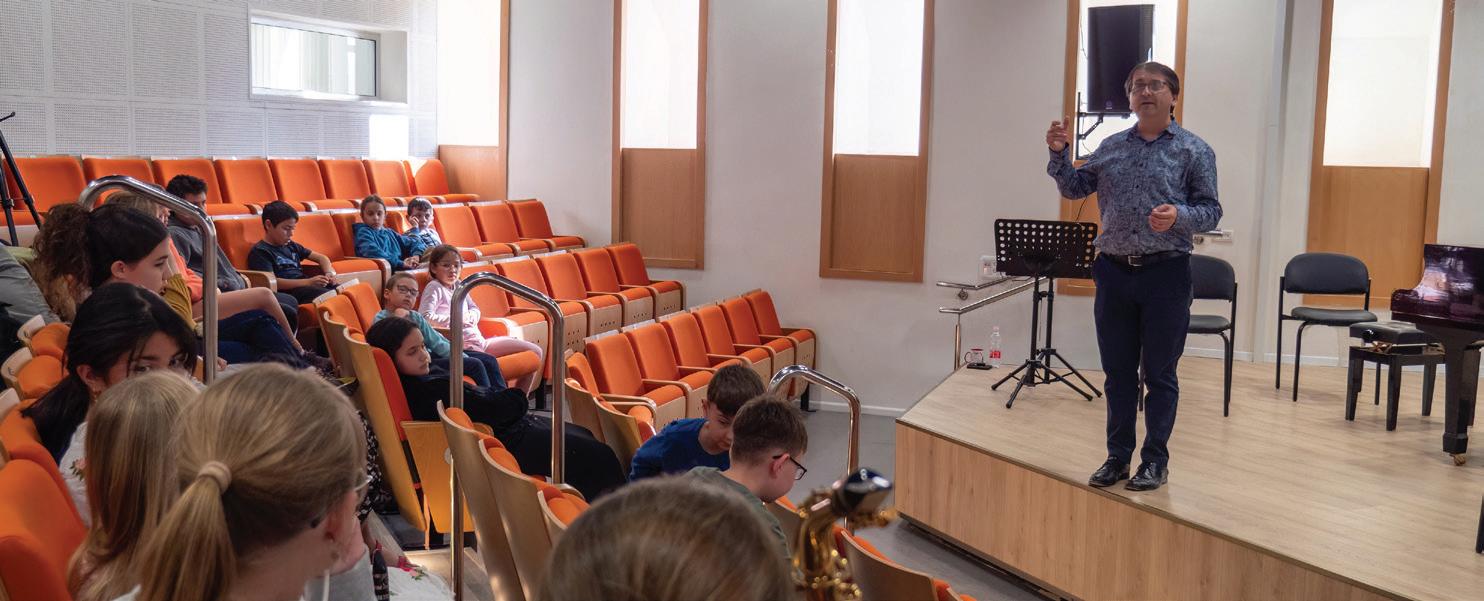
The Berks serve on Jewish National Fund-USA’s (JNF-USA) arts and entertainment task force, which helps support culture-related initiatives such as the conservatory in Arad.
The conservatory has been completely remodeled and renovated to serve more than 400 local students with what it calls “a world-class music education.” Speaking of their work with JNF-USA, Lee Berk said, “[this visit] demonstrates a recognition that Arad is achieving important milestones in music education… this community has a bright future.”
For the almost 50 students who participated in the workshop, being introduced to jazz improvisation was a novel experience. Hendelman remarked that their principal encouraged them to push themselves, try new things, and open their minds to new ideas, which is part of what makes music education so valuable as students are given the opportunity to stretch their imaginations.
Hendelman and the Berks continue to partner to bring art and culture to the Greater Phoenix Jewish community and the people of Arad through various concert and workshop opportunities. JN

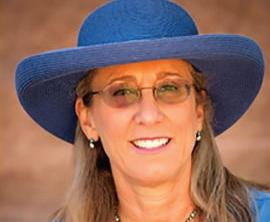
Let me tell you about Mary Cohen. A refined woman of Southern upbringing, she lived in a modest two-room apartment in an assisted living facility. At the age of 95, she woke up one morning, got dressed in a dress and stockings, enjoyed breakfast, sat in her easy chair and died. My reaction? Where do I sign?
As a rabbi, one of the most humble privileges is to be at the bedside of folks at the end of life. To pray together with them and their families and comfort them with the thought that it is okay for them to let go, that the community will be there to support their loved ones and they are free to make their end-of-life journey.
When a person dies peacefully, at the end of a long, good life, it is sad but not necessarily tragic. When someone dies too young, or with extreme suffering, that is truly tragic. There are deaths, I sometimes think to myself, that give death a bad name.
I look through the Hebrew Bible and see records of many deaths. “Abraham,” we read, “breathed his last and died in his ripe old age, satisfied.” (Genesis 25:8). His son Isaac’s death is described in almost the same words. For the most part, the Torah doesn’t share many instances of painful death.
And then there is Saul, the first king of Israel. Wounded on the battlefield, he witnesses the death of his three sons and begs his armor bearer to finish him off. Ultimately, he falls on his own sword, likely wanting to end his own pain and forestall the suffering he would surely endure if captured by the enemy (II Samuel 1:5-10). Surprisingly, there is no condemnation of what clearly seems to be an act of suicide. For most of Jewish history, preemptively ending someone’s life has been strictly prohibited. Halacha, Jewish law, describes a terminally ill person as having the same status in all respects as a person in the midst of life. There is no compassion for the compassionate act of putting someone out of their misery as is stated in the 1994 responsum, “On the Treatment of the Terminally Ill” on the Central Conference of American Rabbis (CCAR) website. That was also the position of the Reform movement when it addressed what was then known as euthanasia 30 years ago. And that was my personal position, too. Temple Chai member Dr. Ron Fischler has been working for many years in support of a proposed medical-aid-in-dying law for Arizona. When he first engaged me in conversation, I couldn’t let go of the
“slippery slope” concerns. Would the so-called right to die become an obligation to die when society is burdened by endof-life care?
Dr. Fischler and I shared many conversations and slowly I have come to a deeper understanding of the need for death-with-dignity provisions. Medical technology has radically changed. In the ancient world, when our traditional sources were formulated, most people did not survive to a ripe old age. They were taken by famine and infection, by war and childhood illnesses. Today, our life expectancy is made possible by medical advances, which have the side effect of allowing us to live long enough to suffer from a myriad of diseases unimaginable in previous centuries — cancer, stroke and heart disease — to name a few.
I’m old enough to remember when pneumonia was “the old man’s friend,” but now antibiotics have made pneumonia a minor illness. Our lives can and are extended way beyond what many of us would consider to be quality of life.
Based on the Sefer Chassidim, Rabbi Moses Isserles (1510-1572), known as Rama in his commentary on the Shulchan Aruch states:
“If there is anything which causes a hindrance to the departure of the soul such as the presence of a knocking noise such as wood chopping near the patient’s house or if there is salt on the patient’s tongue, and these hinder the soul’s departure, then it is permissible to remove them because there is no act involved in this at all but only the removal of the impediment.”
The Talmud relates that it was the unnamed maid of Rabbi Yehudah haNasi who had the good sense to distract his students from their relentless prayers on his behalf, prayers which were keeping him anchored to this earth, and not allowing him to die peacefully. She threw a pitcher to the ground and in the moment of its shattering, they were distracted from their
prayers and he was mercifully able to die (BT Ketubot 104a).
And this shocking rabbinic story: “It happened that an extremely elderly woman came before R. Yose ben Chalafta and said to him, “Rabbi, I am too old, and my life is distasteful to me. I can taste neither food nor drink and I would like to depart from this world.” He said to her, “What accounts for your long life?” She said, “I am accustomed, even if there is something very dear to me, to set it aside and go early to the synagogue each day.” He said, “Refrain from going to the synagogue for three consecutive days.” She did so, and on the third day she fell ill and died.” (Yalkut Shimoni II, #943)
It seems that our tradition does recognize that there is something to be said for the ability to let go at the appropriate moment. Commenting on the verse regarding Isaac’s age, the midrash says that until the time of Abraham, there were no signs of aging and no warning of impending death. Abraham felt slighted that when he and his son entered a community, they appeared to be the same age, so no one knew that he was the elder and worthy of honor. So, God granted him the “gift,” in quotes, of signs of aging. We can thank his son, the midrash continues, for suffering at the end of life, forestalling punishment in the world to come. And it was Jacob who demanded illness, to allow time to get one’s affairs in order.
As a physician, Maimonides concluded that one week between illness and death was ideal. (Torat HaAdam, section “The Gate of the End,” subsection “The Matter of Departure,” quoting BT Moed Katan 28a and Tractate S’machot, also known as Evel Rabati, 3:9-11). I reflect on this having just lost my beloved sister-in-law, Fran, may her memory be for blessing. Her death was a tortuous process as she wasted away. No food for more than three weeks, vital signs that multiple medical professionals assured the family were
incompatible with life and yet . . .
Fran lived in New Jersey, where Medical Aid in Dying (MAID) is legal. Her daughter, my niece Valerie, is confident that had Fran known of its availability, she surely would have availed herself of the opportunity to control the timing of her death, following beautiful expressions of love and farewell.
Fran’s death has converted me into a rabid supporter of MAID. We in Arizona have the opportunity to support a proposed law that would require a patient to:
1. Be an adult (18 years or older).
2. Be a resident of Arizona.
3. Be mentally capable of making and communicating health care decisions.
4. Be diagnosed by both an attending and a consulting physician as having a terminal illness deemed to result in death within six months.
5. Be informed by the attending health care provider of the diagnosis, the prognosis, the nature of the medication to be prescribed and other alternatives, including comfort care, hospice care and pain control.
6. Make an oral request for a prescription for a medication that will hasten death in a humane and dignified manner (such request to be documented in the patient’s medical record). The request may be made via telemedicine.
7. Wait 15 days from the initial oral request and submit a request for the medication in writing, witnessed by two people, and in substantially the same form supplied in the statute. The waiting period can be waived if it is deemed that the patient is likely to die within 15 days. Nationally, 30% of those who request MAID never end their own lives. Yet what a comfort to know that we can control and decide when we have had enough and are ready to let go.
I know this notion is controversial. I am not suggesting that we don’t also have the right to request any and every lifesaving means available. Life is a gift and a blessing, and the Torah tells us to “Choose Life.” Yet, the CCAR, in a recent responsum, supported MAID as a halachically acceptable option and I am proud of that difficult decision.
For more information about MAID, visit azendoflifeoptions.org.
We are a diverse community. The views expressed in these opinion pieces do not necessarily reflect the views of the officers and boards of the Jewish Community Foundation, Center for Jewish Philanthropy, Jewish Federation of Greater Phoenix, Cleveland Jewish Publication Company or the staff of the Jewish News. Letters must respond to content published by the Jewish News and should be a maximum of 200 words. They may be edited for space and clarity. Unsigned letters will not be published. Letters and op-ed submissions should be sent to editor@jewishaz.com
o be a Jew means to care deeply and passionately about everything — from the spot on the new carpet to the stance in which to sing Shema, from your standpoint on various domestic public policies to your positions on foreign policy issues. To be a Jew means to have an opinion and to voice that opinion, or in truly Jewish fashion, to voice a few opinions.
In the Jewish world, we see this most clearly in discussions about Israel, her significance to our people, her relations with the Palestinians and with other Arabs. We struggle to decide: Should Israel be the light unto the nations, holding ethical values up as its highest ideals? Or should Israel, when the desperate need arises, bend those ethical values to survive? Is Israel the reason Jews can stand up proudly or is she the source of discomfort and embarrassment?
One of my teachers taught me there are
Ttwo kinds of Jews in the world. There is the kind of Jew who detests war and violence, who believes that fighting is not ‘the Jewish way,’ who willingly accepts that Jews have their own higher standards of behavior. There is also the kind of Jew who thinks we have been too passive for too long and is convinced that it is time for us to strike back at our enemies, to reject once and for all the role of victim who willingly accepts that Jews cannot afford to depend on favors, that we must be tough and strong. The fact is — most of us are both kinds of Jews.
To be a Jew is to be pulled simultaneously in opposing, yet equally truthful, directions and to recognize the validity of these divergent positions.
There are those who criticize Israel for its vigorous defense of its citizens, who argue that Israel often offers a disproportionate response. Let us not forget, Israel exists in a very bad neighborhood and I for one will not criticize her for defending herself from people, states and organizations of evil which are out to destroy her very existence. Of course, the Kabbalists, Jewish mystics, teach that God balances gevurah, strength, with chesed, loving kindness. We remember that after God drowned Pharaoh and his
army in the Red Sea, God’s angelic hosts started celebrating, singing with glee, Mi Chamocha ba-eilim Adonai, Who is like you, O God? According to the Midrash, God berated the angels. Not for the praise but for the glee. Gevurah might sometimes be necessary but never with joy, and never without sadness at the pain it has created. The Midrash reminds us that strength must always tip back toward loving kindness.
In Israel, all military training emphasizes the policy, tohar haneshek, purity of arms. Israel’s soldiers are bound by a level of morality unmatched elsewhere. All of us should be proud of those Israeli rules. The basic principle of “purity of arms” is: “Israeli Defense Forces personnel will use their weapons and force only for the purpose of their mission, only to the necessary extent and will maintain their humanity even during combat.” It is a constant challenge to balance gevurah, the responsibility to defend oneself, with chesed, the need to act with kindness and compassion. Imagine being a Jewish soldier standing at a border crossing or near a roadblock. Watch an ambulance approach or a car claiming to be carrying a pregnant woman. You wonder about the scene spread out before you: Is
this real? Or is this another terrorist ruse?
So where does the American Jew stand in all of this? We cannot become so caught up in the justified concern for Israel’s safety that we can no longer feel the anguish of civilians who have been killed, wounded or bereaved in what is called collateral damage. And we cannot become so troubled by the innocent deaths caused by Israel’s actions that we forget that Israel acted to protect its own citizens from a terrorist organization and its state sponsors; enemies openly committed to the destruction of Jews and the Jewish state. We need to be both kinds of Jews struggling eternally between two poles: gevurah and chesed.
May we derive the strength from this week’s Torah portion and each of us vow to find the courage to defend our people and our homeland, even as we demand that Jews everywhere stand up for peace. JN
Last week’s Torah portion is named after one of the Torah’s more complicated figures. Pinchas is the grandson of Aaron, the first high priest, and son of Eleazar, the second, and his lineage seems to set the stage for one of the most horrific (and from our perspective, repugnant) moments in the Torah: Pinchas personally took it upon himself to execute an Israelite man in the act of having sex with a Midianite woman.
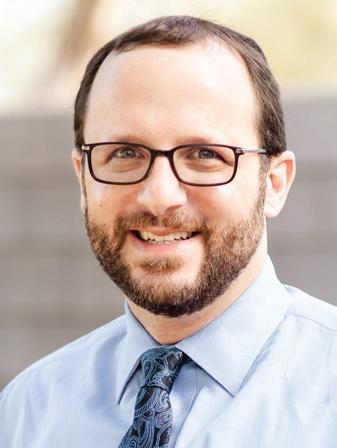
The perceived immorality of Midianite practice apparently overwhelmed the biblical author’s passion for lawful resolution of conflict and proportional response because Pinchas is venerated not only in the Torah, but also by the later rabbinic and Christian traditions. So horrified is the Torah by the idolatry which was a significant part of the attraction to Midianites and their culture that this act of spontaneous violence instantly terminates a plague sent by God to keep the Israelites and Midianites apart. Spearing the couple in the very midst of their passion becomes the paradigmatic biblical warning of the entwined dangers of idolatry and sexual immorality. For this, Pinchas is not only immortalized by King David in Psalm 106, but God directly rewards him with the high priesthood and by bestowing on him a brit shalom, an
eternal covenant of peace.
What is a covenant of peace? A covenant is a mutual relationship of reciprocal benefit. The Hebrew word “shalom” conveys a sense not just of peace, but of wholeness. A covenant of peace then is an invitation to reliable connection, to shared humanity, to a hint of what a better world might become. To bestow one is a sweet gift, reserved for something singular and monumental.
I’ve been reimagining what a brit shalom might look like in our own day, discounting all the latter-day zealots and extremists, the “Pinchases” whose violence remains at the ready to obliterate anyone who violates their vision of conformity. And last week, one was bestowed upon me — a more humane and constructive model of what a covenant of peace ought to look like.
Every Sunday, my 30-year-old son Jacob and I take a long walk along the Santa Monica beach, one of the world’s most fabled ocean fronts and a lively location for celebrating the range of human diversity. This beach features not only breathtaking waves and the pungent scent of salt and sea, but also every possible category of person, many of the world’s languages and a perpetual sense of carnival, as tourists, locals, the homeless, addicts, surfers, families,
lovers and bodybuilders commingle, each contributing to the bustle and chaos that makes the walk eternally new.
One thing you should know about Jacob is that he is a person with autism. He has a wide range of ways of communicating — among them facilitated communication, so I always carry a laminated print out of a keyboard. His enthusiasm, movements and sounds often draw attention from people around us, and not always in the most supportive of ways. That’s what makes this story a true covenant of peace.
As we were making our way through the crowds, we passed a street artist who was taking strips from palm fronds and weaving them into handheld roses. Most vendors ignore Jacob once they decide he is not a serious customer, but as Jacob walked by the woman’s display she looked at him, a bit puzzled at first. As her confusion gave way to recognition, she did the most amazing thing: She touched her heart with her hands, looked Jacob in the eye and smiled at him.
Among other things, autism can be a motion disorder, and Jacob’s body carried him past her display without apparent recognition or pause. But an hour later, we walked by her again. This time, she stooped to pick up one of her roses and held it out
as an offer. Jacob had already swept past, but I called him back and she handed him her gift. Jacob held it and reached for the buddy board so he could type a response. He typed, “Thank you. You are a very kind and compassionate person. I never forget a smile, and I will never forget yours.” She responded, again, by placing her hands on her heart, smiling at Jacob and looking into his eyes.
A moment later, we were walking back to the car, but my heart felt transformed. In an instant, the two of them, each marginalized in different ways, had given each other the gift of affirmation, of belonging, of being seen and appreciated. Each gave the other a covenant of peace. And by witnessing the mutual exchange, I felt elevated and blessed too.
We all have the capacity to bless each other, to see each other as worthy, to cherish each other’s uniqueness. And when we do, we enter into and bestow a brit shalom, a covenant of peace. May we all hasten the day when such gifts are commonplace, and we give and receive them with grace. JN
The views and opinions expressed in this article are those of the author and do not necessarily reflect the views of JTA or its parent company, 70 Faces Media.
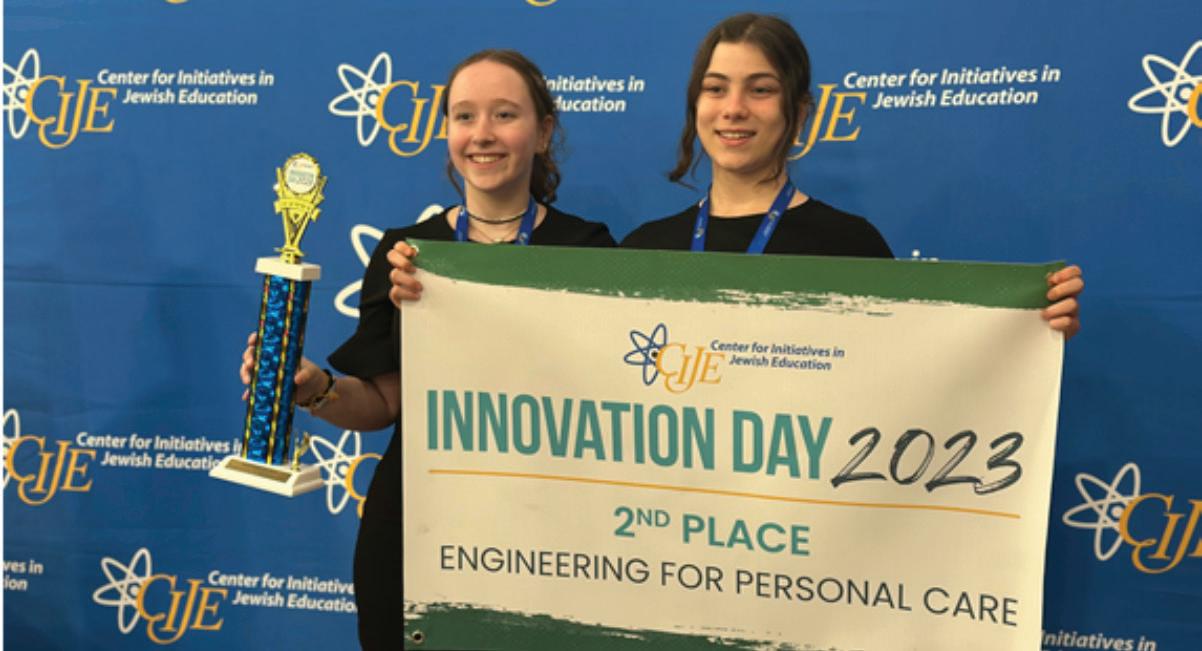 SHANNON LEVITT | STAFF WRITER
SHANNON LEVITT | STAFF WRITER
Algebra II and Gemara — a collection of rabbinical analyses and commentaries on the Mishnah — are probably high school junior Maayan Mollen’s favorite subjects at Nishmat Adin (formerly Nishmat Adin - Shalhevet Scottsdale), while freshman Sarah Nevah doesn’t have a preference. Surprisingly, science doesn’t top either student’s list even though both girls could have bright futures in engineering, given their second-place trophy in this May’s Center for Initiatives in Jewish Education (CIJE) Innovation Day competition.
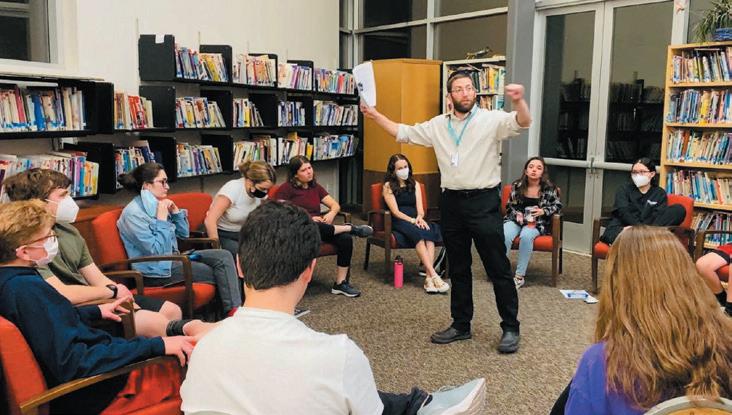

CIJE is a Jewish nonprofit organization that prides itself on bringing hands-on science, technology, engineering, arts and mathematics (STEAM) learning into the nation’s Jewish day schools and yeshivot. Innovation Day is the culmination of its year-long engineering curriculum, where students conceive, engineer and present inventions to be judged. This year’s competition, which took place at New Jersey’s American Dream Mall, was divided into 14 categories, with more than 450 projects by 1,200 students nationwide. Mollen and Nevah’s project “Go With the Flow,” a sanitary napkin that alerts its user once it is ready to be replaced, was part of the “Engineering for Personal Care” category. They were the only competitors from Arizona.



This was the first year that Nishmat Adin incorporated the CIJE curriculum, and when Mollen saw it on offer she thought, “Why not?” In the months since signing up, she’s learned “some things I didn’t want to learn because it’s just annoying, but learning how some of this stuff works is really cool. I’d never been exposed to the whole STEAM thing but all the wires and the batteries and the lights and the Arduino (a physical programmable circuit board and software) and the breadboard (a construction base used to build semi-permanent prototypes of electronic circuits) — that’s just so cool,” she said.
“I like learning how things work and how to build things,” Nevah added. In seventh grade, she was introduced to metalwork, woodwork and soldering. She found the opportunity to work with the electrical aspects of building things “very cool and intriguing.” Thus, when Nishmat Adin offered an engineering course, she too thought, “Why not?”
Abraham Rosengard, Nishmat Adin’s math and engineering teacher and coordinator for the CIGE program, thinks the curriculum is “amazing.”
“I went to Arizona State University (ASU) for biomedical engineering, and I’m effectively teaching with this curriculum a lot of what I learned as an ASU freshman and sophomore. The project the girls did was almost a light form of a senior capstone project. The only thing missing is several hundred more pages of documentation,” he quipped.
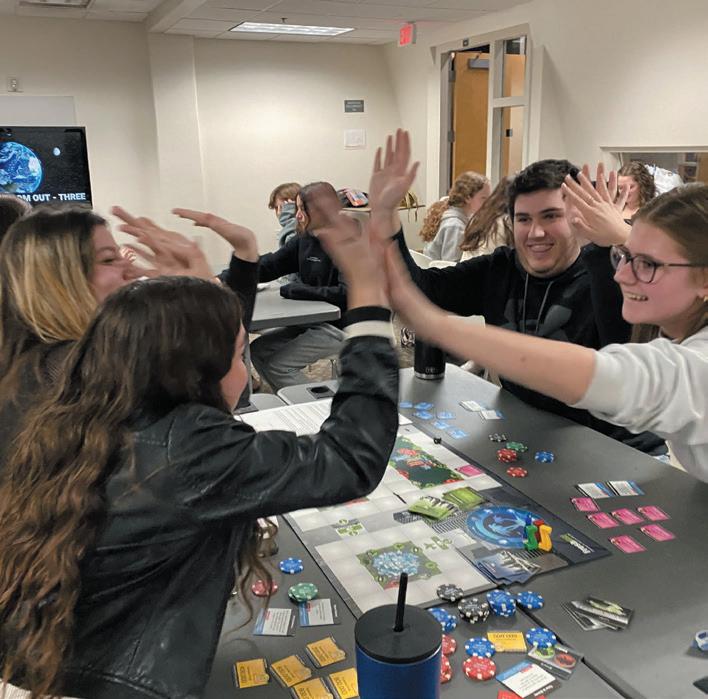
He explained that his students took to the curriculum well — learning about soldering, computer chips, light coding and the fundamentals of electricity. All those elements and more were used to create Mollen and Nevah’s project.
“You don’t have to be the best in math; you just have to understand conceptually how the pieces work together,” Rosengard said.
Mollen and Nevah’s project was inspired by a previous winner that used Bluetooth technology and a phone app to notify a tampon user when it was saturated. That real-world application made sense to Mollen and Nevah and they decided to do something similar with a pad. Instead of Bluetooth and an app, they built a prototype that uses a very thin electric wire that attaches to a small vibrating device someone could easily wear on the hip.
Part of the project was done during the school day with Rosengard’s assistance but to get the intricacies of such a project right, the girls also had to spend many hours after school.
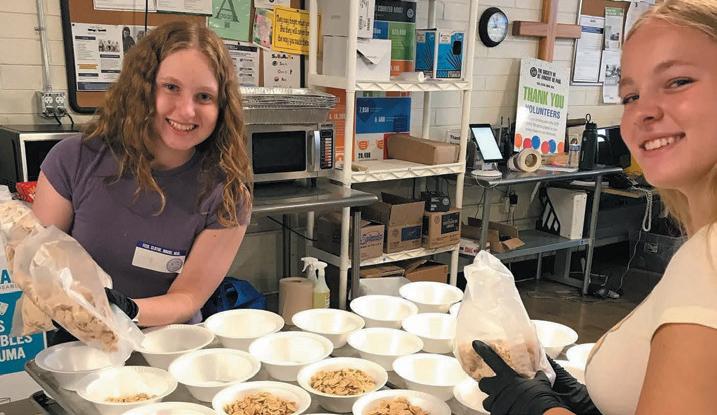
When their project was named one of the winners, the girls took a beat and just looked at each other, speechless, Nevah said. Rosengard, however, “started screaming and yelling and the judge asked why there was only this man. He asked, ‘Where are the kids who made this?’ and we started laughing and said, ‘We’re here!’” Nevah said.
“We hoped we would win, but when they announced it, I thought, ‘Finally, our work paid off,’” Mollen said.
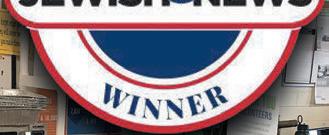
“Like, about time!” Nevah added.


Part of their project involved researching the viability of marketing such a product. Using Google Forms, they surveyed dozens of girls who menstruate to gauge consumer interest. While they had positive responses, there were some safety concerns among the respondents.
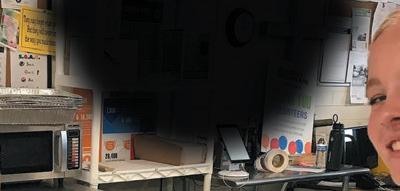
“Most girls said, ‘If it won’t electrocute me, then it’s cool, but if it will, I don’t want any part of it.’ But we don’t use enough voltage to electrocute anyone,” Mollen said.
For the competition, they were able to
request female judges who would be able to understand their project on a visceral level. But they surmised their real advantage over a host of other remarkable projects was their research and presentation.
Rosengard seconded their supposition. In speaking with one of the competition’s coordinators, it was clear that the presentation pushed them over the top.
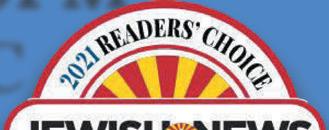
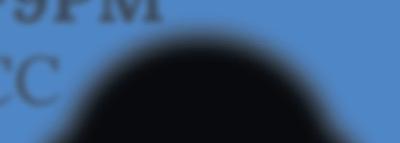
“In their pitch and presentation, the girls talked about goals and pricing, which is the difference between a project and a product,” he said.
Mollen and Nevah, who will be a senior and sophomore next year, respectively, will
have a lot on their plates, including taking part in Citron Online District, the speech, debate and model congress league Nishmat Adin plans to participate in for the first time. Additionally, after their strong start in Innovation Day 2023, expectations are high for next year’s competition. Both say they’re up to the challenge.
“To be able to create such a thing is so cool and we can do it again,” Mollen said. JN
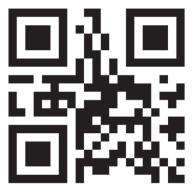
To learn more about and view the “Go With the Flow” project, visit sites.google.com/nishmatadin. org/gowiththeflow/home.

Avery Chadwick didn’t know it when she was first assigned a project about the Holocaust, but she soon discovered that she had something of a personal connection to the subject. Her grandfather’s longtime friend, Marc Yablonka, was the son of a survivor, the grandson of a murdered victim and was willing to tell her the story.
Chadwick, who is Christian, was learning about World War II and the Holocaust for the first time in her eighth-grade honors English Language Arts class at Eduprize School in Queen Creek. Starting in 2022, Arizona’s public schools were required to teach about the Holocaust and other genocides at least twice between seventh and 12th grades.
In addition to lectures, Chadwick and her classmates read “Prisoner-B3807,” a novel by Alan Gratz that tells the story of a Jewish boy in Poland trying to survive as he is transported to 10 different concentration camps.
“The Holocaust was very new to me and it’s just a heavy subject and everyone processes it differently. It was a different kind of energy in the class and everyone was quiet,” Chadwick said.
For the unit’s final project, the teacher offered students a number of broad research topics to choose from, including Adolph Hitler, Auschwitz-Birkenau, concentration camps, death marches, etc. Chadwick considered her options and each time she made a choice, it turned out one of her classmates had beaten her to it.
Her teacher gave her a day to consider something not on the list. She went to lunch with her grandparents and told them of the assignment. That’s when her grandfather, Mike Chadwick, suggested she speak with his friend whose family had experienced it firsthand.


Yablonka agreed to talk to her but he was astonished that a 14-year-old would have any interest in such a difficult and tragic topic.
“I WAS ASTOUNDED THAT A 14-YEAR-OLD GIRL WOULD HAVE IT IN HER TO WANT TO LEARN MORE ABOUT THE HOLOCAUST BASED ON WHAT I WAS LIKE AT 14. HER INTEREST WAS ENLIGHTENING AND UPLIFTING.”
“I was astounded that a 14-year-old girl would have it in her to want to learn more about the Holocaust based on what I was like at 14. Her interest was enlightening and uplifting,” he said.
Yablonka and the young Chadwick corresponded via email for the next couple of weeks, long enough for him to sketch out the details of his family’s history and to illustrate it with a few stories she could readily understand.
“I gave her examples of what my grandmother, mother and aunt went through and I cited different experiences,” he said.
He told her how a priest and nun were the only ones in his family’s village who knew they were Jewish, and his grandmother had to pretend to be Catholic, even attending Mass and taking communion. He told her of the dramatic encounters with Nazis that his mother and aunt survived with clever subterfuge. He told her of the concentration camp his family was forced into.
He also told her that his grandfather was deported to Auschwitz, where he died of dysentery.
Yablonka also told her how worried and overprotective his mother was of him and the impact it had. That detail resonated deeply with Chadwick, who wrote about it in her final essay.
“Her (Marc’s mother) childhood trauma affected her children, even when they were older. The children of
Holocaust survivors develop things such as PTSD, anxiety and depression. Even now, Marc thinks pessimistically and worries about things that don’t need to be worried about,” Chadwick wrote.
In fact, Yablonka, a military journalist and author based in Burbank, California, had never written about his family’s history in the Holocaust — until he started telling his friend’s granddaughter about it for her eighth-grade assignment.
“There’s always been something in the background when I think I’d like to write about this — I think I’ll break down if I do it, but meeting Avery let me write about it,” he said.
Once he started writing, “it flowed out,” he said. He’s working on his memoir and there’s an entire chapter about his family and the Holocaust.
For Chadwick, the experience was “special,” she said. “I got to experience something nobody else had. My information was straight from Marc, so I had a primary source.”
Her project, which included her essay and a large tri-fold board that maps out the story with notes and photos, received an A+. She’d like to learn more about the Holocaust and intends to read “The Diary of a Young Girl,” Anne Frank’s famous diary.
The whole experience “makes me walk on air,” Yablonka said. He only wishes his parents were alive to share it with them. JN

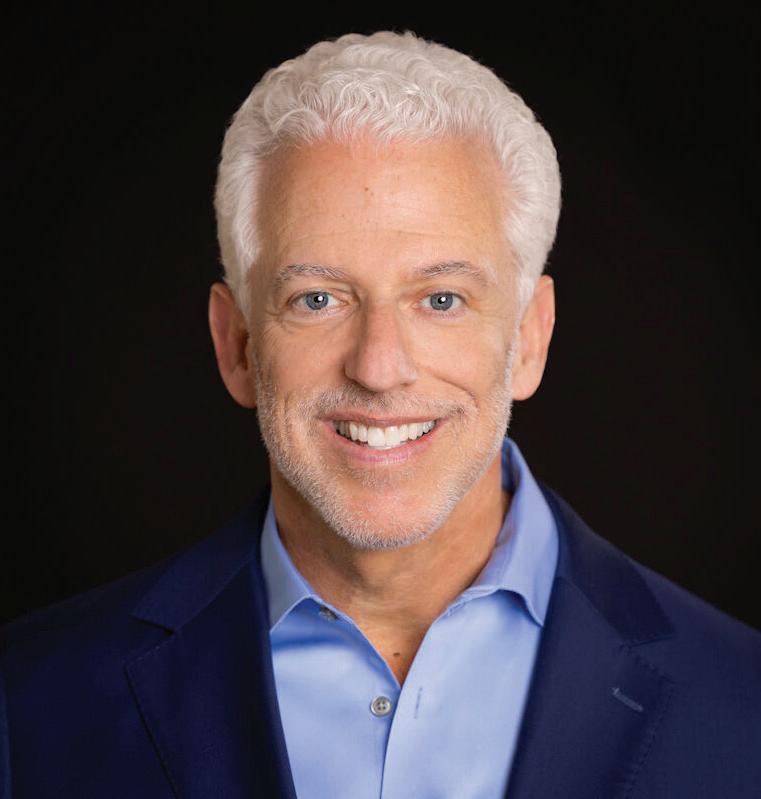
Over the past decade, a seismic generational shift has been quietly unfolding, reshaping our society in profound ways. While the world has been preoccupied with a pandemic, political discourse, technological advancements and cultural changes, little attention has been paid to the silent transition happening right before our eyes. Both the Greatest Generation, also known as the GI Generation (1901-1926) and the Silent Generation (1928-1945) are gradually being succeeded by the Baby Boomers (1946-1964), while a new cohort, Generation Z (1997-2012), is emerging. We need to explore the implications of this demographic transformation and propose strategies to navigate the challenges it presents.
In Arizona, our state will see a profound shift before other states because we have a higher concentration of older adults that live among us. By 2030, there will be more people over the age of 65 than there will be people 17 years old and younger. That
will be a first for us, where the older adult population will outnumber our younger generation, and other states will soon follow.
Both the Greatest Generation and the Silent Generation have been pillars of our society for decades. However, as time passes, many of them are inevitably leaving us. Simultaneously, the Baby Boomers are assuming the mantle of the largest living generation. Now, we have Generation Z, encompassing those born from the late 1990s to the early 2010s, as our new workforce composition is undergoing a profound transformation.
As the Baby Boomers age, society must confront the challenges associated with an aging population. Health care systems need to be bolstered to meet the increasing demands for geriatric care, how we approach mental and physical health and retirement planning must be reevaluated to ensure financial security for this large cohort. Intergenerational programs should be fostered to bridge the gap between

generations, encouraging understanding and providing support networks. Moreover, society as a whole must cultivate a culture that values the wisdom and experiences of the elderly, promoting their active involvement in various domains. We owe it to this generation and with a limited supply of care workers we all need to do our part and step up and help.
With Generation Z, and their subsequent integration into the workforce, a new dynamic emerges. This digitally native generation, raised in a world dominated by technology, brings fresh perspectives and innovative ideas to the table. The seamless integration of AI, automation and other technological advancements will be pivotal in harnessing their potential. By leveraging their tech-savvy nature and enthusiasm, organizations can foster collaboration between generations, creating a harmonious and productive work environment.
To prepare for this tectonic generational shift, policymakers, organizations and
individuals should consider the following strategies for success:
Education and training: Emphasize the importance of lifelong learning to enable workers of all ages to adapt to changing job requirements and technology. Invest in programs that offer
 RABBI MINDIE SNYDER | SPECIAL TO THE JEWISH NEWS
RABBI MINDIE SNYDER | SPECIAL TO THE JEWISH NEWS
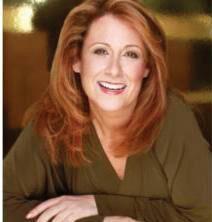
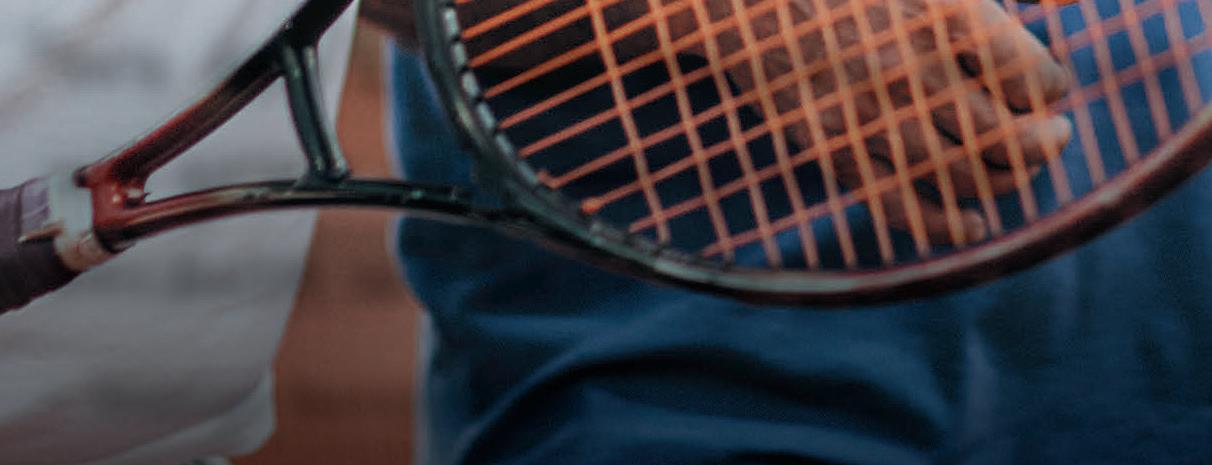



Magic. Where is it found? Plastic surgery, potent botanical creams, vitamins, collagen shakes, lasers that burn hot and cold, none of these things cure the aging human body, the presenting circumstances around aging or the reality of the condition. There is no supernatural modality that separates age from aging. Conclusion: when it comes to aging, magic cannot be found, in any form, anywhere.
Instead, aging is a natural process which varies from person to person. The changes that accompany aging and the influences upon it are also highly individualized. However, there are shared themes that are universal. Among them is the experience of loss. In fact, layers of losses can intersect the accumulation of years. Losses can involve the death of loved ones, alteration of the quality of physical and/or mental health, challenges to one’s spiritual orientation, changes in relationship attachments and roles, among other things.

Recently, the Sun Health Department of Spiritual Life facilitated a memorial service at each senior-living campus to honor beloved community members who died during the past three years of the pandemic, when it was not possible to hold an annual gathering of remembrance. The lists were long and for many, this was the first time their circle of support was able to publicly acknowledge their losses.
The memorial services were in some measure extensions of the grief and loss groups that have been ongoing. However, these sessions have been forums for more intimate expressions of bereavement. Here, private, personal reflections, collective accounts of connection, all converge within the human vessel of memory and experience. Included in our discussions were missing the sight and touch of loved ones; wanting to hear their voices again; recalling travels, shared holidays, the beginning stages of relationships, struggles with illnesses and final good-byes. Some memories got jammed in the spin cycle of incomprehensibility. How could this or that have happened? Questions were banging on the door of consciousness, keeping the mourner awake at night and destabilizing their days. If only something had been different. If only there had been one more day. If only heartfelt truths were shared. If only … Group participants continue to acknowledge that memories can be feisty things. They pull and tug. They lift and lower. They are vivid and multi-dimensional. They are ephemeris
and can evaporate like a veil of smoke. Elie Wiesel (1928-2016) was drawn to “the mystical power of memory” and a world of unlimited potential for good. He said that without memory, our existence would be barren and opaque, like a prison cell into which no light penetrates; like a tomb which rejects the living … if anything can, it is memory that will save humanity. Wiesel continued, “For me, hope without memory is like memory without hope.”
Furthermore, memory in action defies apathy and indifference while it insists that attention be paid in service to caring. Indifference is about not caring. Hanan Parvez (2023) talks about indifference expressed as an “investment imbalance.” Therefore, spending time in acts of remembrance can be understood as an investment because of a commitment to care.
Within the Jewish tradition, memory is active and has tremendous significance as stated by Rabbi Lord Jonathan Sacks (1948-2020):
“To be a Jew is to know that over and above history is the task of memory. As Jacob Neusner eloquently wrote: ‘Civilization hangs suspended, from generation to generation, by the gossamer strand of memory. If only one cohort of mothers and fathers fails to convey to its children what it has learnt from its parents, then the great chain of learning and wisdom snaps. If the guardians of human knowledge stumble only one time, in their fall collapses the whole edifice of knowledge and understanding’ … More than any other faith, Judaism made this a matter of religious obligation. Pesach is where the past does not die, but lives in the chapter we write in our own lives, and in the story we tell our children.”
In his 2019 article, “The Science Behind Jewish Memory,” neurologist Dr. Mitchell Freedman highlighted historian
Yosef Hayim Yerushalmi’s (19322009) observations that the concepts of remembrance and not forgetting are repeated nearly 200 times in the Hebrew Bible: remember the Sabbath; remember the Covenant; remember the Exodus from Egypt; do not forget how you provoked the Lord (the incident of the golden calf). He explained that Judaism is a religion in which remembering and implicitly not forgetting are expressed throughout sacred texts, rituals and liturgy with notable frequency.
Science identifies memory through neurological touch points and different types of memory, for example: episodic, working, semantic and procedural. Freedman noted the multi-generational impact of the chain of research, from
SHIFT
CONTINUED FROM PAGE 15
retraining opportunities and encourage the acquisition of new skills.
Mentoring and reverse mentoring: Establish mentorship programs that pair seasoned professionals with younger generations, fostering knowledge transfer and creating a support system. Additionally, encourage reverse mentoring, where younger employees can share their expertise and technological fluency with older colleagues.
French neurologist Jean-Martin Charcot (1825-1893), leader of modern neuroscience in the 19th century, to his student, physician and psychologist Paul Sollier (1861-1933). Charcot’s work inspired Sollier to examine how memory worked in the brain. In turn, Sollier’s findings influenced philosopher and author Marcel Proust’s (1871-1922) exploration of how involuntary memory contains the essence of the past. As we age, some memories may fade while others become more acute and even more precious. However, missing loved ones, yearning for them, may trap a person in the past. Honoring that which is no longer physically part of one’s life without sacrificing the potential of the lived moment may be difficult.
Workplace flexibility: Embrace flexible work arrangements to accommodate the needs and preferences of different generations. Offer options for remote work, job sharing and phased retirement to ensure a smooth transition and retain valuable institutional knowledge.
Diversity and inclusion: Recognize and value the contributions of individuals from diverse age groups. Promote an inclusive culture that celebrates generational differences, fostering collaboration and innovation.

Interestingly, Judaism’s commitment to the act of remembering intersects with its determination to prioritize life. Moments of life are to be lived. Rabbi David Teutsch (2016) referenced the significance of bitul z’man (wasting time). He noted that the minutes and hours of our lives are precious gifts, saying that when we do not use our time well, we squander those gifts, those irreplaceable resources. Teutsch considers bitul z’man a betrayal of ourselves, asserting that we should strive to balance our efforts to be productive with our awareness of beauty and miracle in each moment.
It is understood that the bandwidth of life on earth has its limits, and the currency of each moment varies, depending upon the person and circumstance. Once spent,
The generational shift currently unfolding carries immense significance, yet it often goes unnoticed amidst the rapid pace of technological advancements. By preparing for the aging population and embracing the rise of Generation Z, we can tap into the strengths and experiences of each cohort. Integrating technological solutions such as Generative AI (artificial intelligence technology that can produce various types of content including text, imagery and audio) offers a unique opportunity to facilitate intergenerational communication
that unique segment of time cannot be repeated. As we age, burdens appear, challenging us to appreciate the gift of the present, testing our equilibrium between moment and memory. Magic cannot prevent, nor remedy this predicament.
Rabbi Alexandri said (Berakhot 17a), “May it be Your will, Lord our God, that You station us in a lighted corner and not in a darkened corner, and do not let our hearts become faint, nor our eyes dim.” May the blessing of each precious moment be savored so that when moments transition to memories they fuse with wisdom and joy, sustaining us, as days unfold. JN
and collaboration. By embracing lifelong learning, mentoring programs, workplace flexibility and diversity, we can navigate this transformative period with resilience and success. Let us seize this moment to build a future that harnesses the collective wisdom and potential of every generation with an emphasis on how we care for this Boomer generation that reshaped our society and economy that we live in today. JN
Bob Roth is the managing partner of Cypress HomeCare Solutions.
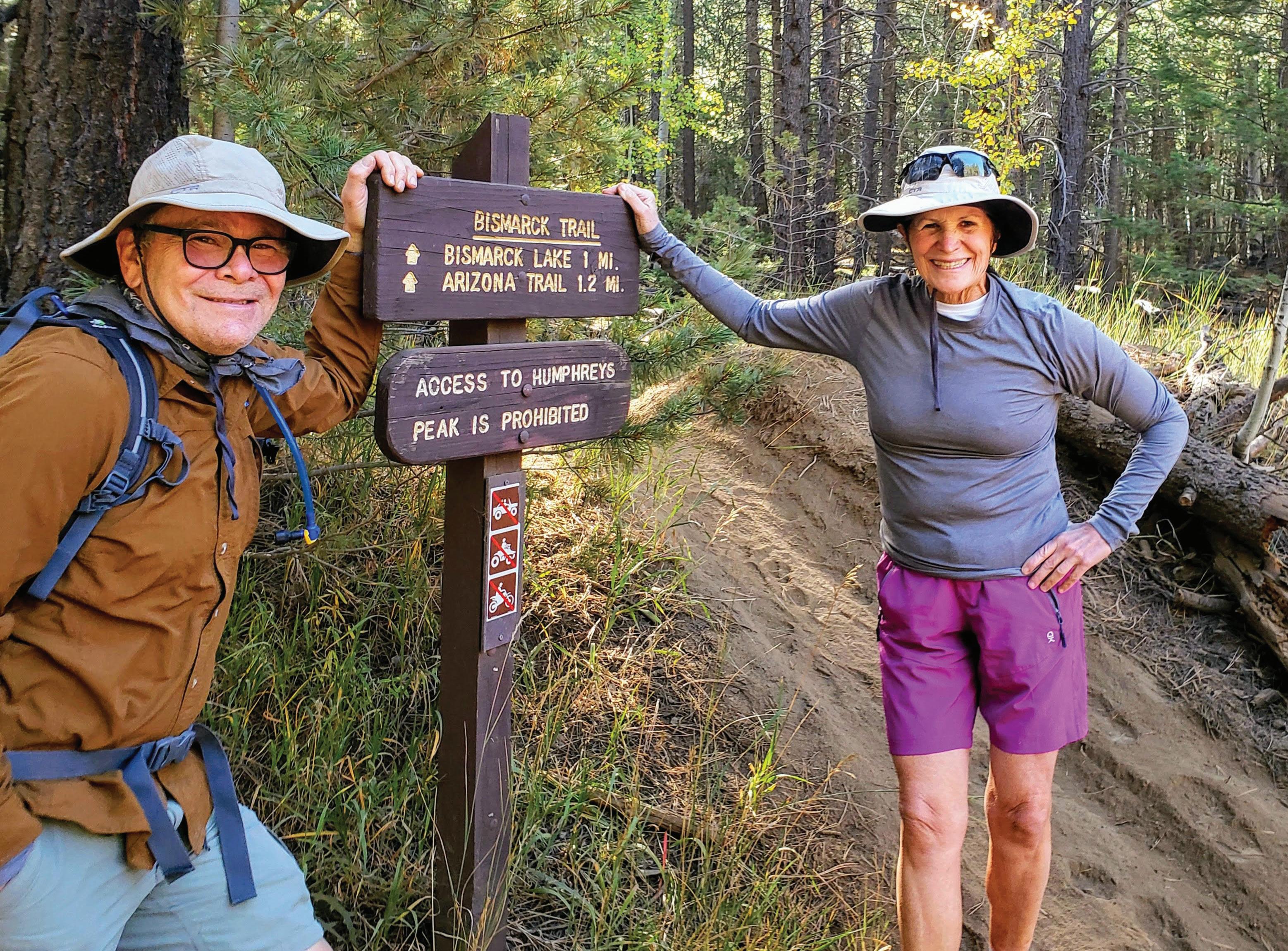 SHANNON LEVITT | STAFF WRITER
SHANNON LEVITT | STAFF WRITER
Atrip to a hospital in a tiny Northern Arizona border town was not part of Stephen and Jan Hertzfeld’s plans when they last hiked a segment of the Arizona Trail near the north rim of the Grand Canyon a couple of years ago in June. Both are experienced hikers, and Jan is a fitness professional and usually very conscious of managing hydration and electrolyte balance on long desert hikes. But even among avid hikers, summer in the desert can be treacherous, especially at high elevation.
“It was one of those very hot days. It was 90 degrees and we were at roughly 9,000 feet. I just got really sick,” Jan said.
However, she didn’t get sick right away. When the Hertzfelds met friends for dinner at the North Rim’s Grand Canyon Lodge, Jan might have felt a little off but was basically still OK, or so she thought. Later, the problem became inescapable when she “threw my guts up all night long!”
The couple was staying about 30 miles from the North Rim and discovered that an ambulance would take about six hours to arrive. Thus, the best choice was to drive to Kane County Hospital in Kanab, Utah 45 miles away.
The problem was a sodium imbalance caused by hypernatremia, a lack of adequate water intake.
“The little hospital took really good care of me but it was scary being so far away from anything and getting so sick,” Jan said.
Helpfully, both Steve and Jan — longtime members of Beth Ami Temple in Paradise Valley — know a lot about health care. Steve is a registered nurse and in addition to teaching fitness professionally, Jan has a master’s degree in public health. Fitness is even how they met while both working for the Internal Revenue Service — Jan was the IRS’ fitness director.
“She took care of all us stressed-out workers,” Steve said.
When Steve started at the IRS, he knew it wouldn’t be forever. At 40, he entered a nursing program but with a full-time job and family obligations, it took a decade to complete. At 50, he began taking on parttime nursing jobs, as well as volunteering his nursing services. (By this time, he had
also joined the IT staff of the Veterans Affairs Phoenix Health Care System. He could have been a full-time nurse there but it would have been at least a 20% pay cut, so nursing became his side hustle).
In addition to his contract nursing jobs, he volunteered for the Pascua Yaqui Tribe at its tribal headquarters in Guadalupe, and the Wesley Community and Health Center in south Phoenix, which served a predominantly Hispanic population.
Steve also speaks Spanish fluently and still travels widely in Latin America as a “couch surfer.” Not one for traditional tourism, he likes to see the sites, but also enjoys getting to know a country’s people and the best way to do that is to live among them. He uses a website called couchsurfing.com to find places to stay wherever he goes.
Meanwhile, Jan became the Phoenix YMCA’s health and fitness director and then Maricopa County’s health and fitness director for employee wellness. In June 2020, her position was eliminated due to the COVID-19 pandemic and she decided to retire. Steve had already retired a few years earlier. Together they volunteered for Maricopa County Public Health, passing out personal protective equipment, educating people on its use and eventually helping with the vaccination efforts. They also volunteer for the International Rescue Committee in Phoenix and the McDowell Sonoran Conservancy, leading hikes.
Despite its pitfalls and dangers, hiking in Arizona is one of their shared passions. For Steve’s last birthday in March, he created a Facebook fundraiser for the Arizona Trail Association.
“I’ve chosen this nonprofit because their mission means a lot to me, and I hope you’ll consider contributing as a way to celebrate with me,” he wrote.
Luckily, the couple has a lot of memories of the Arizona Trail that don’t involve all-night puking sessions. Even
one bad episode hasn’t kept them off a trail that stretches from Mexico to Utah and traverses the whole north–south length of Arizona for roughly 800 miles. It’s divided into 43 passages within southern, central and northern sections, many of which the Hertzfelds have hiked throughout the years.
Due to its ruggedness and difficulty, it has had relatively few “finishers,” people who have hiked the complete trail. Being a finisher isn’t necessarily a goal of the Hertzfelds, but it wouldn’t surprise either of them if one day they totaled their segments and found they had actually hiked all 800 miles.
About a decade ago, they started a hiking club at Beth Ami. As the years rolled on, it gradually turned into a walking club and now it’s more of a strolling club, depending on who joins any given hike.
“It’s all perception — hiking freaks some people out,” Steve said.
Jan started teaching a Zoom fitness class for Beth Ami members during the pandemic and still leads it every Wednesday from the couple’s home.
THE ARIZONA TRAIL STRETCHES FROM MEXICO TO UTAH AND TRAVERSES THE WHOLE NORTH–SOUTH LENGTH OF ARIZONA FOR ROUGHLY 800 MILES.

Real estate transactions are complex and significant financial endeavors that require careful consideration and skillful negotiation. The art of negotiation plays a crucial role in these transactions, allowing buyers, sellers and real estate professionals to achieve favorable outcomes. Whether it’s securing the best deal, resolving conflicts or navigating through challenges, negotiation empowers all parties involved to reach mutually beneficial agreements. This article explores the power of negotiation in real estate transactions and highlights its impact on achieving success.
Negotiation in real estate begins with determining the fair market value of a property. The buyer and seller may have different perspectives on the property’s worth and negotiation helps bridge this gap. Skilled negotiators employ various strategies such as market research, comparative analysis and property inspections to gather relevant information. Armed with this knowledge, they can advocate for their position effectively and negotiate a price that reflects the property’s true value.
Negotiation allows both buyers and sellers to secure favorable terms beyond just the sale price. Buyers can negotiate aspects such as financing arrangements, closing costs, repairs or contingencies to protect their interests. On the other

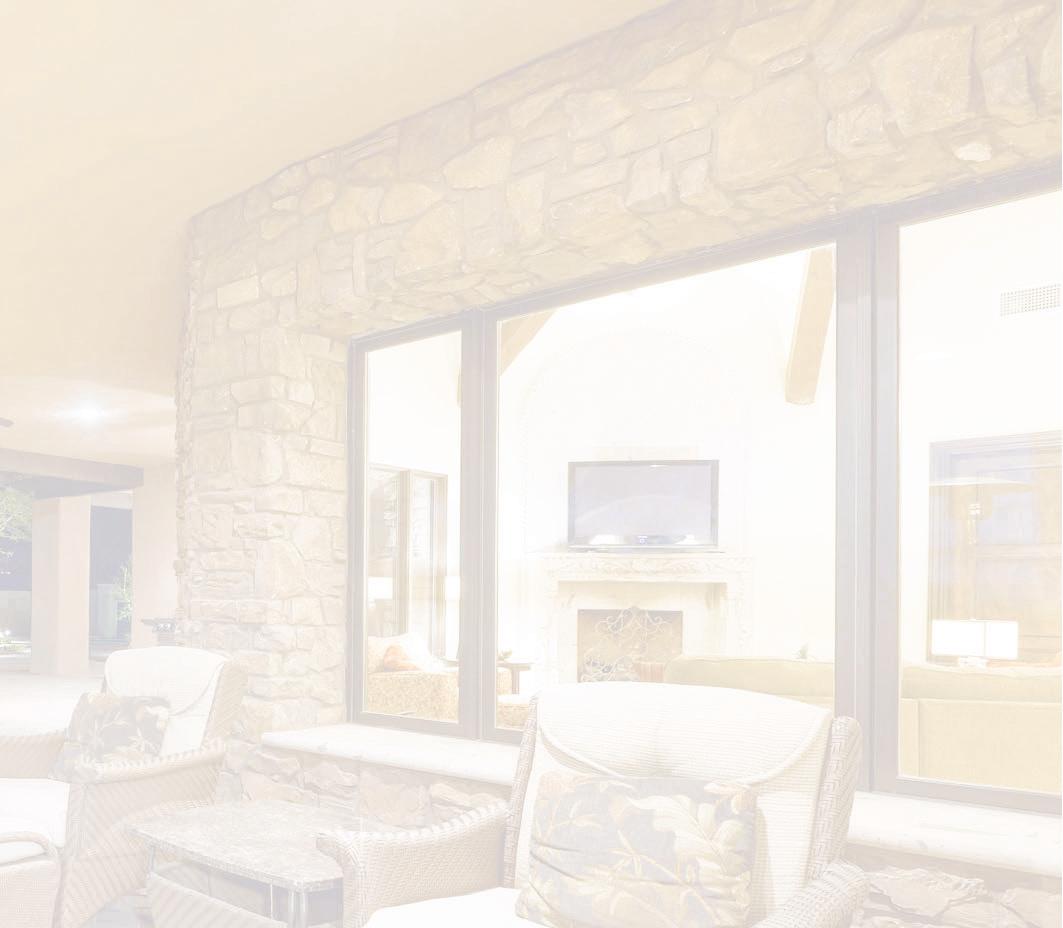

hand, sellers can negotiate timelines, lease-back options or other concessions to enhance their selling experience. Skillful negotiation enables parties to craft deals that address their specific needs and maximize their financial benefits.
3. RESOLVING CONFLICTS
Real estate transactions often encounter obstacles that can lead to conflicts between buyers, sellers or other stakeholders. Negotiation serves as a powerful tool to resolve such conflicts and keep the transaction on track. Whether it’s renegotiating terms after inspection issues, resolving disagreements during the appraisal process or addressing concerns during the final walk-through, negotiation skills enable parties to find common ground and reach agreements that overcome obstacles.
4. MANAGING EMOTIONS AND EXPECTATIONS
Buying or selling a property can be an emotional experience, as it involves significant investments and life-changing decisions. Negotiation helps manage these emotions and aligns expectations between parties. Skilled negotiators remain calm, objective and focused on the desired outcome. They leverage effective communication, active listening and empathy to understand the concerns and motivations of all parties involved. By addressing these emotional aspects, negotiation paves the way for productive discussions and mutually beneficial resolutions.
Real estate markets are dynamic and can fluctuate based on various factors such as supply and demand, economic conditions or local regulations. Negotiation allows buyers and sellers to leverage these market conditions to their advantage. In a buyer’s market, where supply exceeds demand, buyers may negotiate lower prices or request additional concessions. In a seller’s market, where demand exceeds supply, sellers can negotiate favorable terms and potentially higher sale prices. Being aware of the market conditions and skillfully negotiating within that context can lead to significant financial gains.
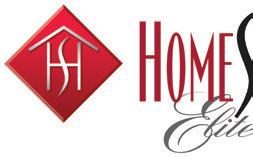
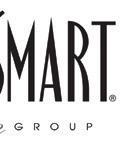
Negotiation in real estate is not limited to buyer-seller interactions. It extends to establishing relationships and networks with other industry professionals, such as real estate agents, lenders, attorneys and contractors. These relationships can provide valuable insights, market knowledge and opportunities for future transactions. Negotiation skills foster trust, credibility and effective collaboration, which are essential for building strong professional networks in the real estate industry. The power of negotiation in real estate transactions cannot be overstated. It serves as a catalyst for achieving favorable outcomes, resolving conflicts and maximizing financial benefits for
buyers, sellers and other stakeholders. Skilled negotiators understand the importance of fair market value, securing favorable terms, managing emotions, leveraging market conditions and building relationships. By harnessing the power of negotiation, individuals can navigate the complex world of real estate with confidence, achieving their goals and ensuring successful transactions. JN
Ophir Gross is a realtor with Coldwell Banker Realty and has a combined skillset of business strategy and consumer psychology. She is a member of JNFuture Root Society, Women in Philanthropy, NowGen Phoenix, attends Congregation Beth Tefillah and began her roots in the community at the Phoenix Hebrew Academy and, formerly, Jess Schwartz High School. She can be reached at ophir.gross@cbrealty.com or 480-794-0807.
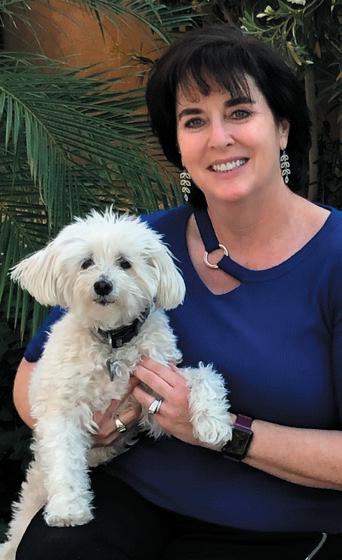

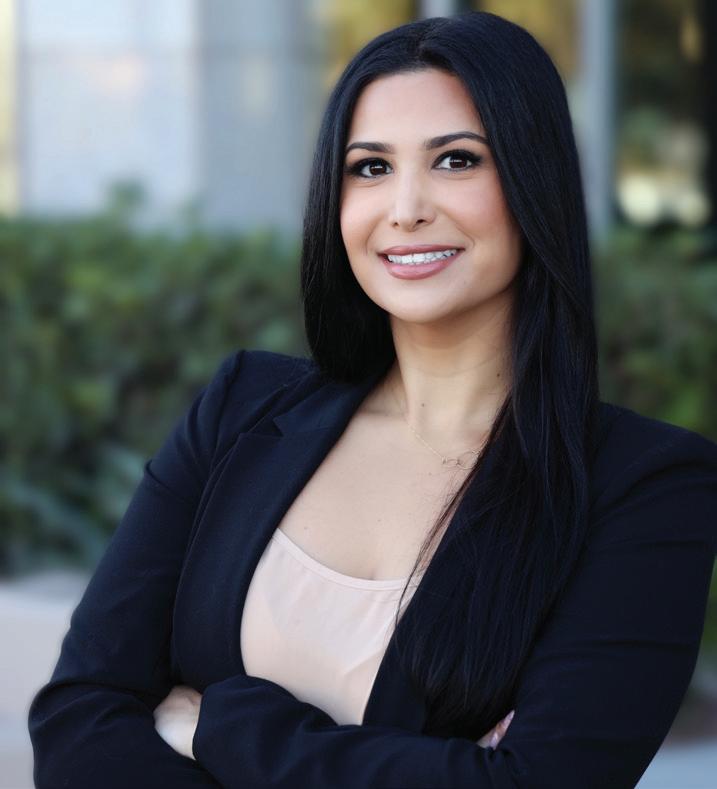
Americans spend a lot of time in the bathroom — 416 days during a lifetime, on average, according to StudyFinds.org. That equates to over an entire year of our life! With so much time spent in the loo, a change of scenery may be in order, especially if your bathroom has matching wallpaper, shower curtain, toilet seat cover and bathmats. How long can you look at the same wall art, tchotchkes and wallpaper?
Rochelle Horn, a certified kitchen and bath designer (CKBD) offers some ideas to upgrade your bathroom.
“I see people questioning the need for a tub, or if they have a tub, they want an artistic statement — a freestanding luxury,” said Horn. “I also see folks wanting a spa feel, a place to regroup and refresh.”
Large showers with multiple shower heads and a bench or drop-down seat create a spa-like atmosphere. Ease of maintenance is popular. A handheld showerhead makes cleaning the shower easier. Speaking of showerheads, infusing the water with essential oils and spainspired fragrances will take your shower routine from ordinary to blissful.
Taller vanities are easier on the back, even if you are not six feet tall. No more straining your back to wash your face.
FIXTURES
Want to limit your exposure to germs?
Some smart faucet models have remote controls for easy use anywhere in your home. Advanced systems also send notifications of leaks and water usage.
“I prefer single-handle faucets. Not only is it less to maintain, but it also helps to avoid water being too hot or not hot enough,” said Horn.
TOILETS
Update the toilet. A 20- to 30-year-old toilet will be less efficient than newer models. A new low-flow toilet uses significantly less water and can enhance the appearance of a bathroom. Some lowflow toilets incorporate bidet features. Bidets are becoming more popular in the U.S. Toilets are available in different shapes and heights. There are smart toilets that warm the seat and release a pleasant fragrance. When replacing a toilet, opt for a taller model that is the height of a kitchen chair. It will be easier to use as you age or for taller people in the household.
No one looks good in incandescent light. It is time to switch to energy-efficient LEDs. They save energy, last longer
and provide you with a better look at, well, you. Incorporate natural light with skylights, windows and ambient lighting. Create an outdoor atmosphere without having to “go” outdoors.
EARTH TONES & FEATURES
Replace shades of gray and white with earth tones of beige, cream, taupe and terra cotta. Add contrast with greens, blues and browns which are pleasing to the eyes. They also stimulate relaxation due to the feelings of nature and wellness they inspire.
Incorporate these organic hues with natural stone tile or countertops. Use large format tiles where there is a lot less grout to maintain. Some new grouts have a built-in sealer that makes cleaning and maintenance easier. Also, consider adding textured tiles to prevent slips and falls, especially if water ends up on the floor. Wood isn’t just for cabinetry. Frame art and mirrors with wood. Accessorize with wooden tissue boxes, jewelry trays and soap dishes.
Plants not only add beautiful splashes of color but also purify the air. If the plants you choose need at least six hours of sunlight a day, place them near a window.
Geometric mirror shapes add dimension. Some mirrors use smart technology including anti-fog mechanisms, smart touch abilities, USB charging stations
and other features. Say goodbye to the wall-to-wall vanity mirrors! Funky frame designs and shapes are in style. Let your personality and creativity shine. Built-in lighting features create a sleek, minimalist and stylish bathroom with contemporary backlit mirrors and front lights.
Keep skincare products cool and refreshing by storing them in a tiny countertop refrigerator. No need to store them in the kitchen. “I love chilled skincare products,” said Susan Kregar, staff writer, Rosie on the House. “They feel refreshing and are an energy boost during my morning routine.”
Keep medications cool with a refrigerated medicine cabinet. “They are awesome for diabetic medication that needs to stay cool and dry,” said Horn.
Rather than pile items on large shelves or shove them in the closet where they will never be seen again, install floating shelves above the toilet, add another shower rack for towels and place hooks on the door. Hang wicker baskets on the walls to store regularly used items. The wicker will fit well with the natural elements.
More people are choosing to stay in their homes as they age. There are more multi-generational family members living under one roof. The National Kitchen &
Bath Association (NKBA) listed universal design as a considerable influence on bathroom design in 2022. Homeowners are incorporating adaptations to meet everyone’s needs.

Most of these ideas can be DIY projects. If plumbing and flooring are out of your skillset, hire a professional contractor through the Arizona Registrar of Contractors (ROC).
While the powder room can show off your good taste to visiting friends and family, it’s not just about design. For your guests, it’s about function.
When updating your bathroom, consider the people who will visit that room. Remember to:
• Add an empty shelf or a hook on the back of the door, where someone can hang a jacket or a purse.
• Keep the room sparkling clean. You never know when your next-door neighbor or your mother-in-law will surprise you with a visit.
• Add more lights over the sink. Attach overhead lights to a dimmer switch, as they can cast shadows that make it hard to apply makeup. JN
Rosie Romero, Jr. is co-owner of Arizona’s home improvement radio program “Rosie on the House.” For a Rosie on the House Certified Partner, visit rosieonthehouse.com/search-partner/.
Valley’s religious school students pause for a photo to commemorate the last day of the school year in May.
Tamir Hendelman, long-time member of the Jeff Hamilton Trio and the Clayton-Hamilton Jazz Orchestra, and award-winning pianist-composer, delighted a crowd last month at the Arizona Jewish Historical Society, in collaboration with Red Rocks Music Festival.



Paul Rockower, executive director of the Jewish Community Relations Council of Greater Phoenix, brought an issue of Jewish News with him to the Netherlands as he enjoyed a few days in Amsterdam. COURTESY OF PAUL ROCKOWER

Seventeen local teens traveled to California this summer with Bureau of Jewish Education of Greater Phoenix's Hebrew High’s CAREaVAN and spent their second day volunteering at the Ventura County Senior Nutrition Food Share. They were all excited to hold a live chicken, which they joked could become their mascot.
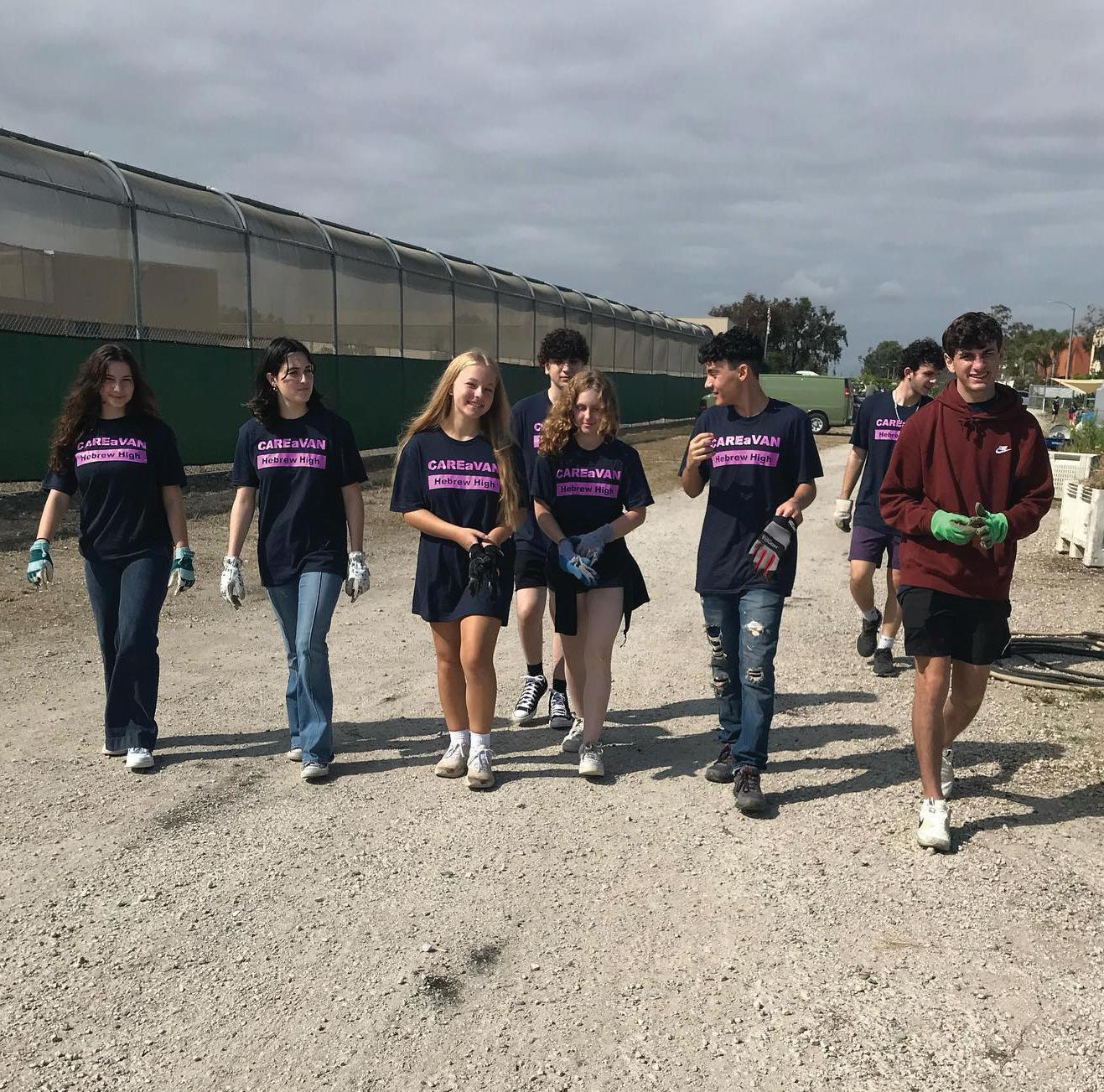
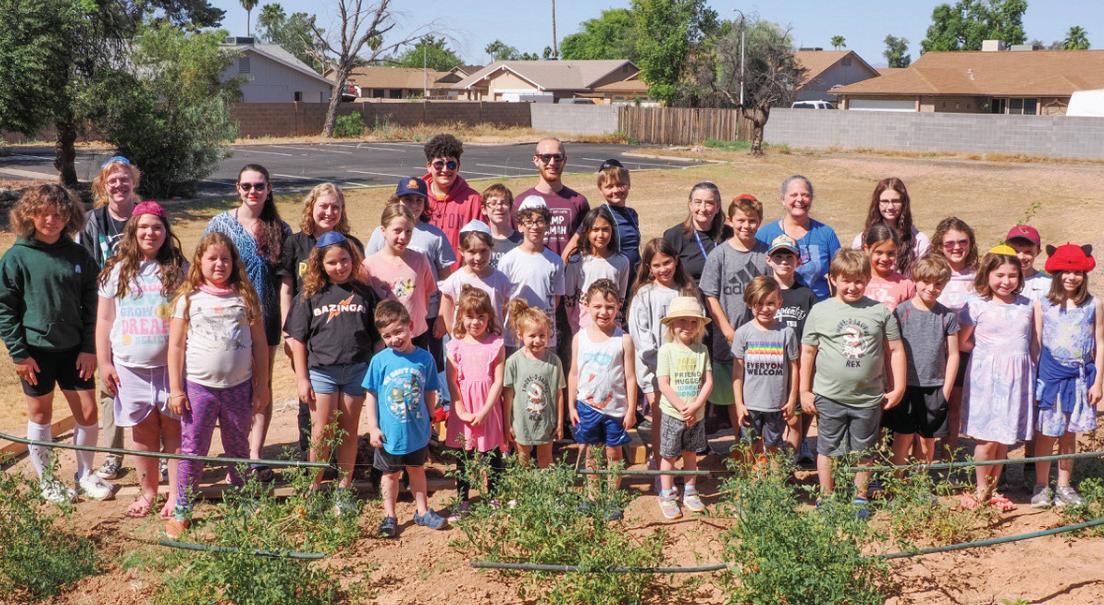
Congregation Beth Israel Cantor Seth Ettinger and his co-star Lauren Berman rehearse for their lead roles as Leo and Lucille Frank in the Arizona Musical Theatre Orchestra’s showcase of “Parade,” a Tony-awardwinning musical about one of America’s most infamous antisemitic incidents. The sold-out performance took place in Phoenix’s Central United Methodist Church on Saturday, June 24.
SUNDAY, JULY 16
Summer Splash: Hawaiian Luau: 11 a.m.-1 p.m. Valley of the Sun Jewish Community Center, 12701 N. Scottsdale Road, Scottsdale. Join the Valley of the Sun JCC for fun poolside. Cost: Free; registration required. For more information, visit vosjcc.org/program/summersplash/.

SUNDAY, JULY 16
PHA Ice-Cream Social: 1-2:30 p.m. Beth El Congregation, 1118 W. Glendale Ave., Phoenix. Join the Phoenix Holocaust Association, survivors, 2Gs, 3Gs, family and friends for ice cream and all the fixings. Cost: $10 adults (non-survivors, survivors are free), $5 for ages 12 and under. For more information, visit phxha.com/ events-2/.
SATURDAY, JULY 22
Singles Speed Connection Event: 5-8 p.m.
Fat Cats Mesa, 5846 E. Longbow Pkwy., Mesa. Meet other Jewish singles between ages 20-25 at this event. You’ll spend three to four minutes chatting with each attendee. Cost: $38; includes pizza, soda, dessert and a $15 card for the arcade. For more information, contact Debbie at debbie.m.rochester@gmail.com.
SUNDAY, JULY 23
Back-to-School Clothing Swap: 10-11:45 a.m.
The New Shul, 7825 E. Paradise Lane, Scottsdale. Bring your outgrown clothes and shoes, for ages birth-age 18, and go home with the next size that you need. PJ Library will be there with stories for the kids. All unclaimed clothes will go to AZ Jews for Justice to be distributed to refugee families. For more information, contact Jolene Kuty at jolenekuty@yahoo.com.
MONDAY, JULY 24
When was the Last Time You Invited God to a Social Get Together?: 10-11 a.m. Online. Join Valley Beit Midrash for a virtual presentation by Dr. Jonnie Schnytzer, who holds a Ph.D. in Jewish Philosophy, focusing on medieval kabbalah. Cost: $18. For more information, visit valleybeitmidrash.org.
SUNDAY, AUG. 13
Family Welcome Brunch: 10 a.m.-12 p.m. Hillel at Arizona State University, 1012 S. Mill Ave., Tempe. If you are helping an incoming freshman move into their dorm at ASU, take a break and join Hillel for brunch. Cost: Free. For more information, visit hillelasu.org.
SUNDAY, AUG. 20
Summer Music Series: 3 p.m. Arizona Jewish Historical Society, 122 E. Culver St., Phoenix. Join the Arizona Jewish Historical Society for a concert featuring Nicole Pesce presenting songs by Carole King, Neil Sedaka, Marvin Hamlisch, Burt Bacharach and others. Cost: $25 for AZJHS members; $36 for nonmembers. For more information, visit azjhs.org/ nicole.
SUNDAY, AUG. 27
Jewish Community Day with the Dbacks: 1:10-4 p.m. Chase Field, 401 E. Jefferson St., Phoenix. Join the Center for Jewish Philanthropy of Greater Phoenix along with other Jewish organizations for a day out at the ballpark as the Arizona Diamondbacks play the Cincinnati Reds. Cost: $20-$58; $15 for kids ages 15 and under with the purchase of one adult ticket. For more information, visit jewishphoenix.com/events/jewish-community-daywith-the-diamondbacks/.
SUNDAYS
B.A.G.E.L.S: 9-11 a.m.; last Sunday of the month. Valley of the Sun Jewish Community Center, 12701 N. Scottsdale Road, Scottsdale. Grab a bagel and a cup of coffee at Bagels And Gabbing Every Last Sunday and enjoy some time with your friends and make new ones. You must register to attend. Bagels and coffee will be provided. Cost: Free for members, $5 for guests. For more information and to register, visit vosjcc.org.
THURSDAYS
Storytime at Modern Milk: 9:30 a.m. Modern Milk, 13802 N. Scottsdale Road, #163, Scottsdale. Storytime for babies, toddlers and preschoolers. Integrates children’s books and songs while giving parents new ideas for play. Cost: $5. For more information and to register, visit modernmilk.com/after-baby.
SUNDAYS
Chassidus Class: 9 a.m. Online. Learn about the Chasidic movement with Rabbi Yossi Friedman. Cost: Free. For more information, visit chabadaz.com.
Jewish War Veterans Post 210: 10 a.m. Online. Any active duty service member or veteran is welcome to join monthly meetings, every third Sunday. Cost: Free. For more information, email Michael Chambers at c365michael@ yahoo.com.
Sundays are for the Family Weekly Feed: 3-5 p.m. Tempe Beach Park, 80 W. Rio Salado Pkwy., Tempe. Join Arizona Jews for Justice and AZ HUGS for the Houseless every Sunday to serve food to those in need. For more information and to RSVP, email Arizonajews4justice@gmail.com.
Anxiety in the Modern World: 6 p.m. Online. Learn the secrets of the Torah for living stressfree in the current environment with Rabbi Boruch of Chabad of Oro Valley. Cost: Free. Tune in using this link: zoom.us/j/736434666. For more information, visit chabadaz.com.
MONDAYS
Ethics of Our Fathers: 7 p.m. Online. Learn with Rabbi Zalman Levertov. Tune in at: bit. ly/2Y0wdgv. Cost: Free. For more information, visit chabadaz.com.
Quotable Quotes by our Sages: 7 p.m. Online. Learn with Rabbi Shlomy Levertov. Tune in at: JewishParadiseValley.com/class. Cost: Free. For more information, visit chabadaz.com.
Partners in Torah: 7:30 p.m. Online. Join a growing group of inspired learners with Project Inspire. Cost: Free. Tune in at: us04web. zoom.us/j/3940479736#success, password is 613. For more information, email Robin Meyerson at robin@projectinspireaz.com.
Learning to Trust in God: 7:30 p.m. Online. Learn with Rabbi Yossi Friedman. Tune in at: ChabadAZ.com/LiveClass. Cost: Free. For more information, visit chabadaz.com.
Torah & Tea: 7:30 p.m. Online. Learn with Rabbi Yossie Shemtov. Cost: Free. For more information, visit Facebook.com/ChabadTucson.
TUESDAYS
Let’s Knit: 1:30 p.m. Ina Levine Jewish Community Campus, 12701 N. Scottsdale Road, Scottsdale. Share the pleasure of knitting, crocheting, etc. outside the social hall in the campus. Can’t knit? We can teach you! Every level welcome. Cost: Free. For more information, visit vosjcc.org.
Maintaining an Upbeat Attitude: 7 p.m. Online. A class exclusively for people in their 20s and 30s, learn how Jewish Mysticism can help with your attitude with Rabbi Shlomy Levertov. Cost: Free. Tune in at: JewishParadiseValley.com/YJPclass. For more information, visit chabadaz.com.
WEDNESDAYS
History of the Jews: 11 a.m. Online. Learn the Jewish journey from Genesis to Moshiach with Rabbi Ephraim Zimmerman. Cost: Free. Tune in here: zoom.us/j/736434666. For more information, visit chabadaz.com.
Torah Study with Temple Beth Shalom of the West Valley: 11 a.m.-12:30 p.m. Online. Weekly study group explores that week’s portion and studies different perspectives and debates the merits of various arguments. Intended for adults, Torah study is open to students of all levels. For more information, contact the TBS office at 623-977-3240.
Happiness Hour: 11:30 a.m. Online. Class taught by Rabbi Pinchas Allouche that delves into texts and references culled from our traditions to address a relevant topic. For more information or to join, visit cbtvirtualworld.com.
Torah Study with Chabad: 12 p.m. Online. Take a weekly journey of Torah with Rabbi Yossi Levertov. Cost: Free. For more information, visit chabadaz.com.
Lunch & Learn: 12:15 p.m. Online. Grab some food and learn with Rabbi Yehuda Ceitlin. Cost: Free. Get Zoom link by emailing info@ chabadtucson.com. For more information, visit chabadtucson.com.
The Thirteen Petalled Rose: 1 p.m. Online. Kabbalah class that studies “The Thirteen Petalled Rose” by Rabbi Adin Even-Israel Steinsaltz, focusing on the many concepts of Kaballah and Jewish Mysticism and applying them to everyday life. For more information or to join, visit cbtvirtualworld.com.
JACS: 7:30-8:30 p.m. Valley of the Sun Jewish Community Center, 12701 N. Scottsdale Road, Scottsdale. In person and via Zoom support group for Jewish alcoholics, addicts and their friends and family on the first and third Wednesdays of the month. Cost: Free. For more information, email jacsarizona@gmail. com or call 602-692-1004.
Words & Whiskey: 8:30 p.m. Online. Learning session for men. Cost: Free. To RSVP, email rmollenaz@gmail.com or call/text 310-709-3901.
Ladies Torah & Tea: 10:30 a.m. Online. Learn about the women of the Torah with Mrs. Leah Levertov. Cost: Free. Tune in at: ourjewishcenter.com/virtual. For more information, visit chabadaz.com.
Talmud - Maakos: 11 a.m. Online. Learn with Rabbi Shlomy Levertov. Cost: Free. Tune in at: JewishParadiseValley.com/YJPclass. For more information, visit chabadaz.com.
Mindfulness Gatherings: 12 p.m. Online. Hosted by Hospice of the Valley via Zoom. Cost: Free. To join by phone, dial 1-253-2158782, meeting ID 486 920 2119#, to get the Zoom link or for further questions contact Gill Hamilton at ghamilton@hov.org or 602-748-3692.
Weekly Mahjong: 1-3 p.m. Temple Solel, 6805 E. McDonald Dr., Paradise Valley. All skill levels are welcome to play and lessons are available for those who want to learn. RSVP to dottiebefore@gmail.com each week so they know how many tables to set up.
Israeli Dancing: 2-3 p.m. Temple B'rith Shalom, 2077 Brohner Way, Prescott. Join Temple B'rith Shalom for a beginning Israeli dance class for all ages. Cost: Free. For more information, visit brithshalom-az.org.
The Science of Everything: 4 p.m. Online. Explore the most fundamental work of Chassidut: the Tanya, with Rabbi Boruch. Cost: Free. Tune in at: zoom.us/j/736434666. For more information, visit chabadaz.com.
Teen Discussions: 7-8:30 p.m. Online. Learn with Rabbi Tzvi Rimler. Cost: Free. Tune in at cteen.clickmeeting.com/east-valley. For more information, visit chabadaz.com.
SATURDAYS
Torah Study: 9-10 a.m. Temple Solel, 6805 E. MCDonald Dr., Paradise Valley. Discuss the weekly Torah portion in depth, with a variety of perspectives from the Temple Solel community. For more information, email matkoz@ cox.net.
Saturday Mindfulness Gatherings: 9:30 a.m. Online. Hosted by Hospice of the Valley. To join by phone, dial 1-253-215-8782, meeting ID 486 920 2119#. To get the Zoom link or for more information, contact Gill Hamilton at ghamilton@hov.org or 602-748-3692.
Torah Study: 10 a.m. Temple B'rith Shalom, 2077 Brohner Way, Prescott. Join Temple B'rith Shalom for a discussion on the week's parshah. Cost: Free. For more information, visit brithshalom-az.org.
Book Discussion: 1:30-2:30 p.m. Online. Join Or Adam Congregation for Humanistic Judaism on the third Saturday of every month for a book discussion. For more information and to register, contact oradaminfo@gmail.com. JN
Rebecca Sasha Wax and Brooks O’Boyle Gerli were married at the Cosmopolitan Club in New York on June 10, 2023.
The bride’s parents are Janet Reiser, MD and Paul Wax, MD of Paradise Valley. The groom’s parents are Tiggie and Jay Gerli of Sharon, Connecticut.
The couple met in New York City and honeymooned in Turks and Caicos. They will live in New York City.
Jennifer Lyn Sydeski and Bradley Efrem-William Factor were married at Phipps Conservatory and Botanical Garden in Pittsburgh, Pennsylvania on May 28, 2023.
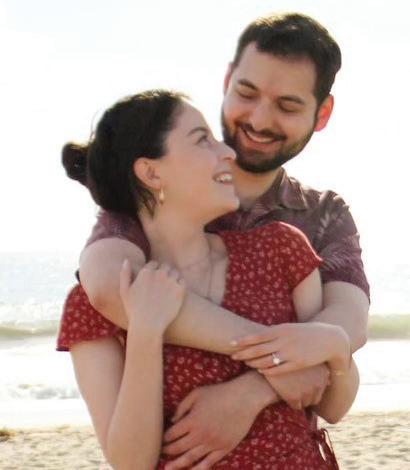
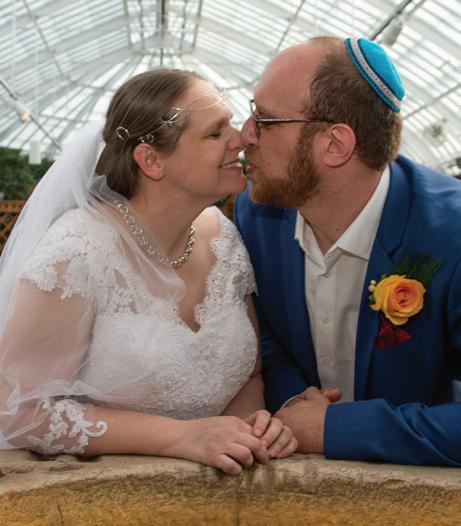
The bride’s mother is Linda Sydeski of Pittsburgh. The groom’s parents are Mindie and Dr. Mitchell Factor of Scottsdale.
Jennifer works as an innovator at Sheetz, CEO of Connect Wolf and consultant at EKTO VR. She attended the University of Pittsburgh, Slippery Rock University, Duquesne University and Carnegie Mellon University.
Bradley is the CEO of EKTO VR. He received a BS in engineering from Cornell University and a MRSD (master’s in robotic systems development) from Carnegie Mellon University.
The couple met at Alpha Lab Gear, an incubator for tech startups, in Pittsburgh and honeymooned for one night at the Hotel Monaco in Pittsburgh. JN
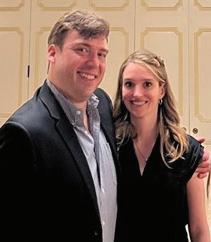
Ellen and Paul Schifman of Scottsdale announce the engagement of their son, Eli Schifman to Xochitl Smola, both of Los Angeles, California.
Mother of the bride-to-be is Xochitl Wagoner of El Paso, Texas.
Eli graduated from Arizona State University in 2019. He works as a private equity associate at Freeman Spogli & Co. in Los Angeles.
Xochitl graduated with a BS from Arizona State University in 2020 and a master’s from University of California, Los Angeles in 2021 and is currently a Ph.D. student there studying psychology.
The wedding will take place in Scottsdale in May 2024.
Ellen and Paul Schifman of Scottsdale announce the engagement of their son, Benjamin Schifman to Aleksandra “Sasha” Vidisheva, both of Playa Vista, California.
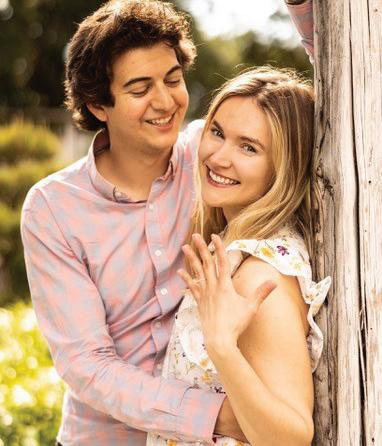
Mother of the bride-to-be is Janna Warren of Santa Fe, New Mexico.
Benjamin graduated with a BS from the University of Arizona in 2017 and a master’s in 2018. He works as a software engineer at SpaceX in Hawthorne, California.
Sasha graduated with a BS from the University of Southern California in 2014 and attended medical school at the University of Arizona. She is a life science consultant at BluePath Solutions in Los Angeles.
The wedding will take place in 2024. JN

Lawrence “Larry” Epstein of Phoenix, 89, peacefully passed away with his family by his side on Thursday, June 22, 2023.
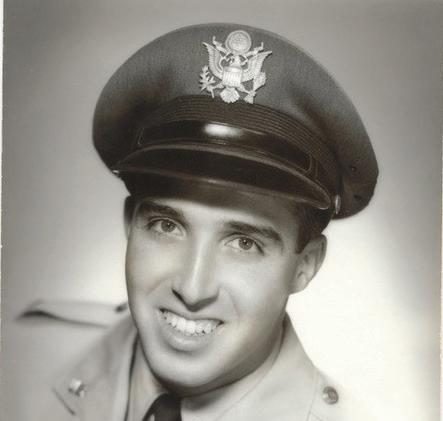
He was born on March 19, 1934 in Tucson, to Louis and Mary Epstein. Raised in Mount Vernon, New York, he graduated from the University of Vermont. Larry served in the United States Air Force for four years.
He married Bette Mae Becker from Yonkers, New York in 1957. They were married for 65 years. Larry and Bette Mae moved to Phoenix in 1961 to raise their family. They were lifetime members of Congregation Beth Israel in Scottsdale.
Larry was a loving and devoted husband, father, grandfather and great-grandfather. He is survived by his wife, Bette Mae; daughter, Roni Zeman (Bob); son, Howard Epstein (Christine); grandchildren Ashley Cunningham (Chris), Hilary Gordon (Scott), Rachel Epstein and Ben Epstein; great-grandchildren Emily and Jackson Cunningham and Blake and Taylor Gordon.
A family graveside service was held on June 26, 2023. He will be greatly missed by all who loved him.
Donations in his name can be made to one of our two family-founded charities: Arizona Housing Fund (arizonahousingfund.org) or Barks of Love (barksoflove.org)
Selma Friedman, beloved wife of the late Stanley Friedman and daughter of the late Isadore and Esther Goldstock, passed away on Friday, June 16 — one week before her 95th birthday. Cherished mother of William Friedman (Judith), Ivy Segal (Herman), Amy DeMichele and Lisa Sylvester (Ken). Grandmother to nine grandchildren and eight great-grandchildren.
SHARE YOUR ENGAGEMENT, WEDDING,
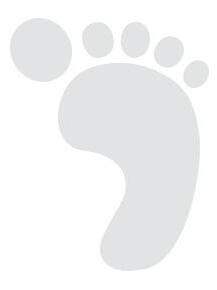

Born Selma Rhoda Goldstock in Schenectady, New York, she and her family moved to Phoenix in 1975 from Oklahoma City, and previous to that Schenectady, where Stanley was employed by General Electric.
Selma was a lifelong member of Weight Watchers and worked for many years as a receptionist at the meetings. She and Stanley had a costume jewelry business where they traveled the western U.S. showing their line of bracelets, necklaces, earrings and accessories.
She enjoyed watching movies, listening to music and playing Scrabble on her computer as well as card games and mahjong with her lady friends at the Ranch Estates in Scottsdale, where she resided for eight years.
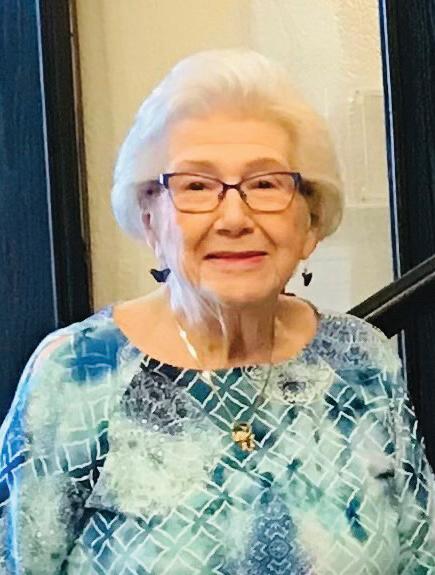
A graveside service was held on Monday, June 19 at Beth El Cemetery.
Our deepest gratitude and thanks go to the Bellaire Assisted Living and staff of caring people during Selma’s final days and to Hospice of the Valley.
Donations in Selma Friedman’s memory can be made to Banner Alzheimer’s Foundation, 2901 N. Central Ave. #160, Phoenix, AZ 85254 or Hospice of the Valley, 1510 E. Flower St., Phoenix, AZ 85014.

